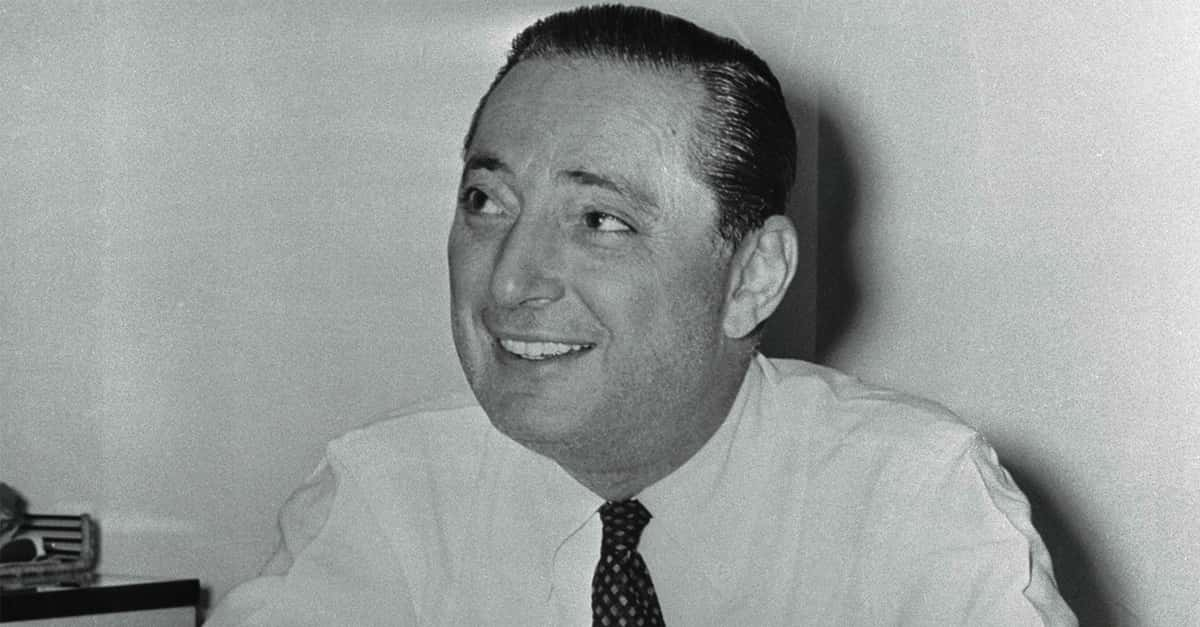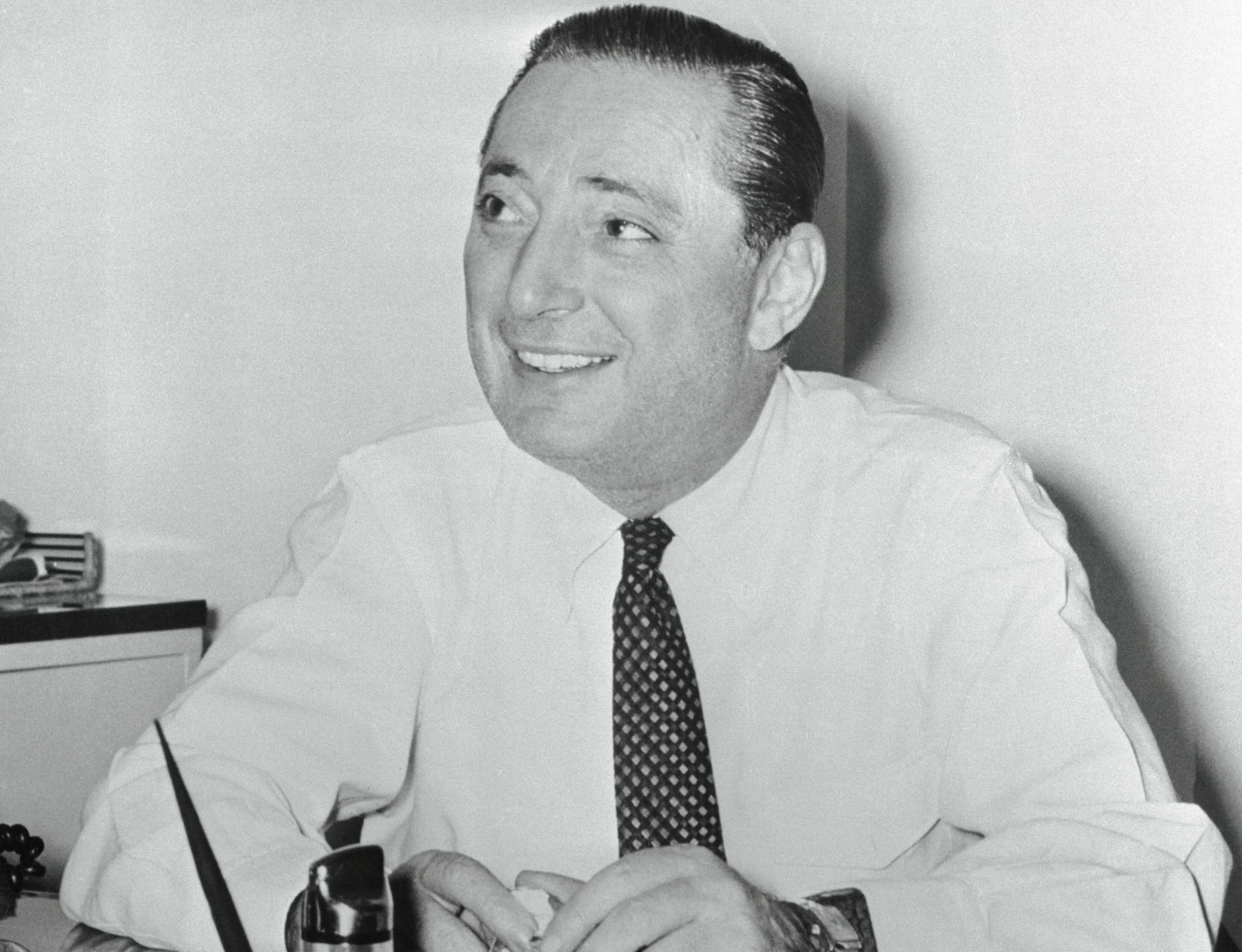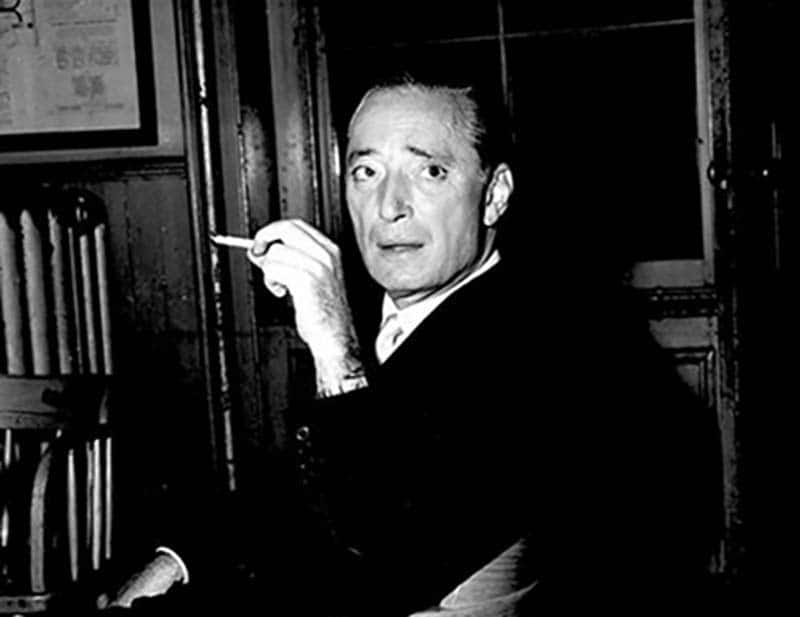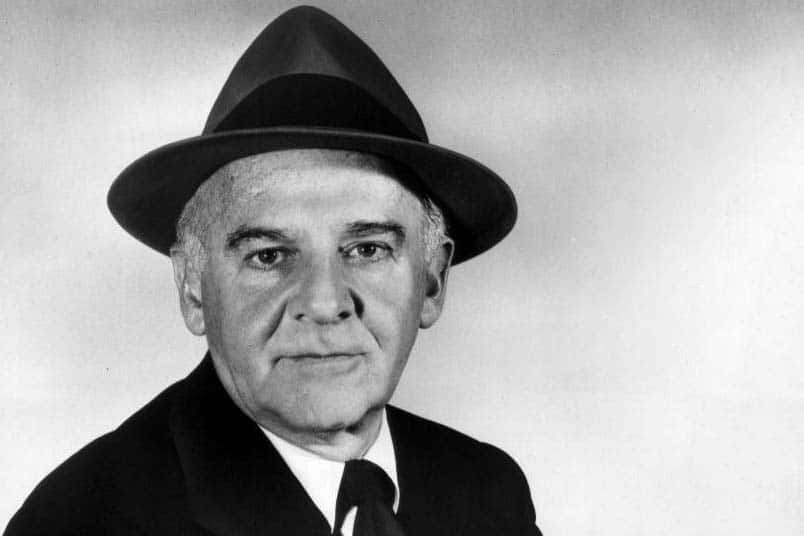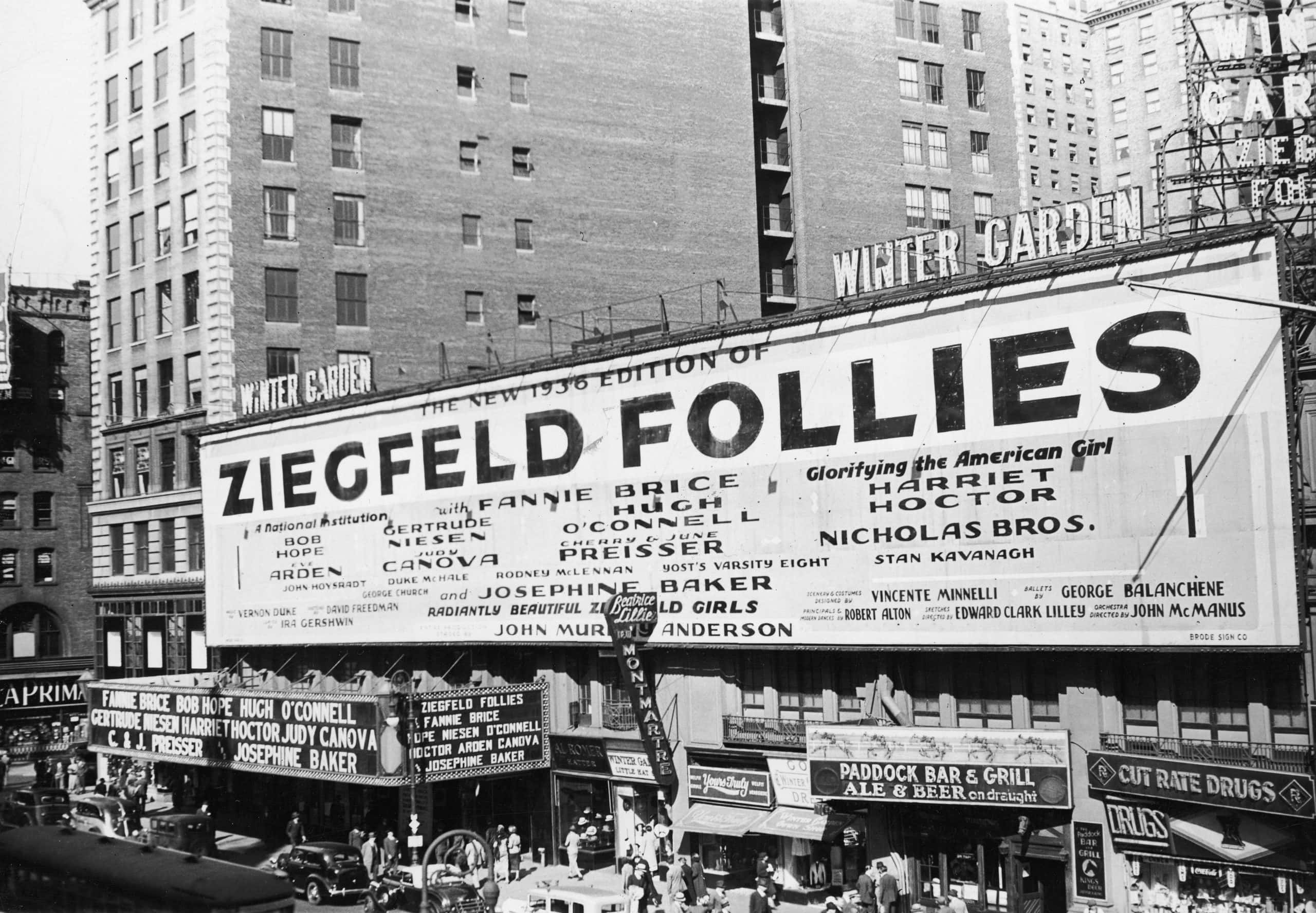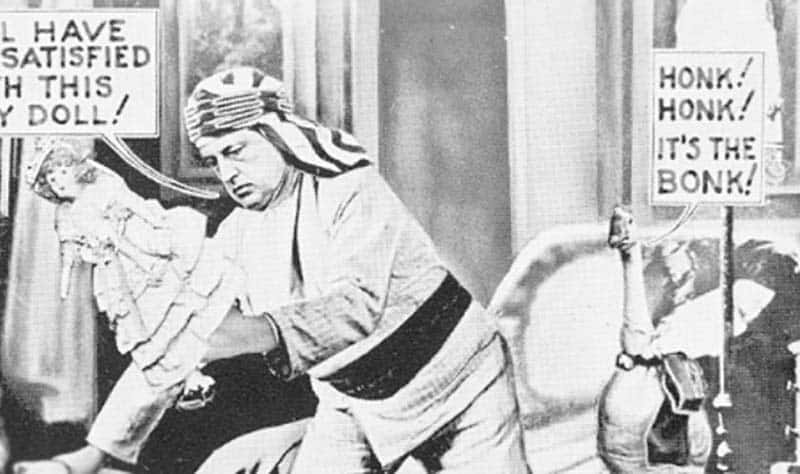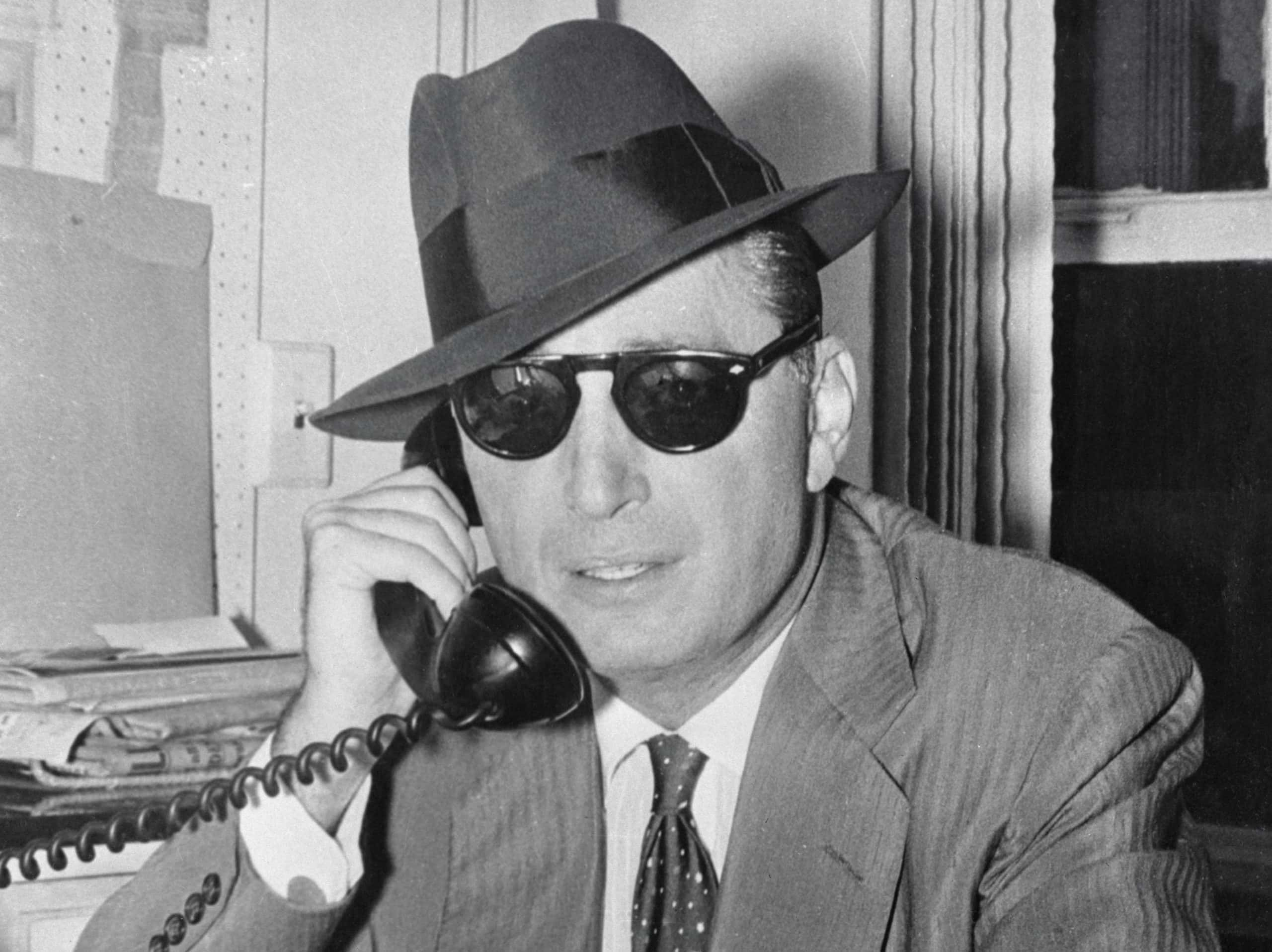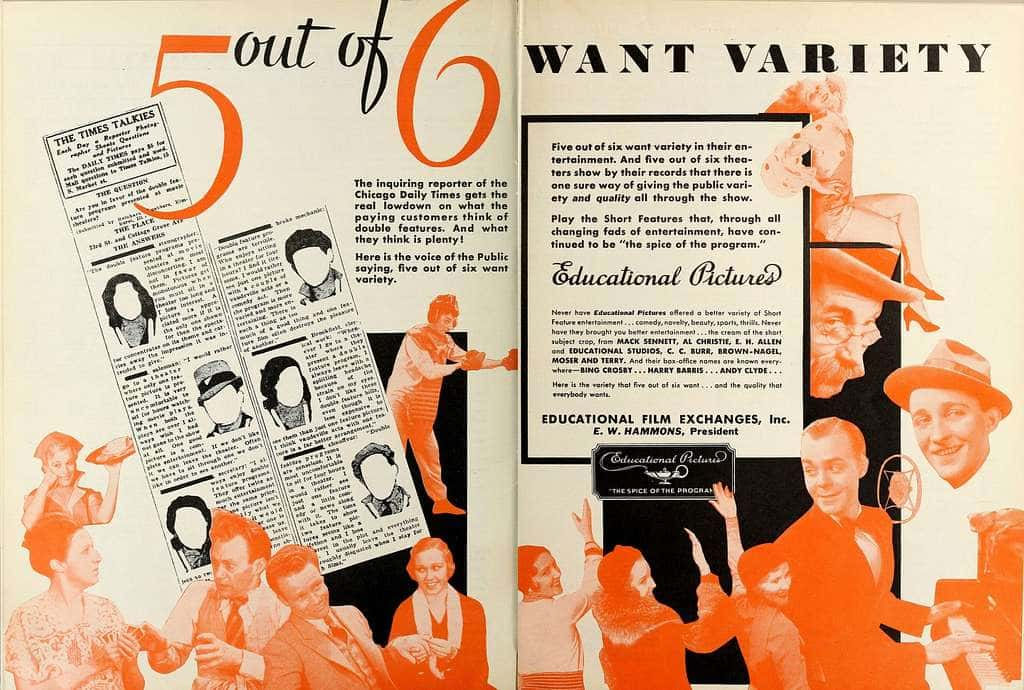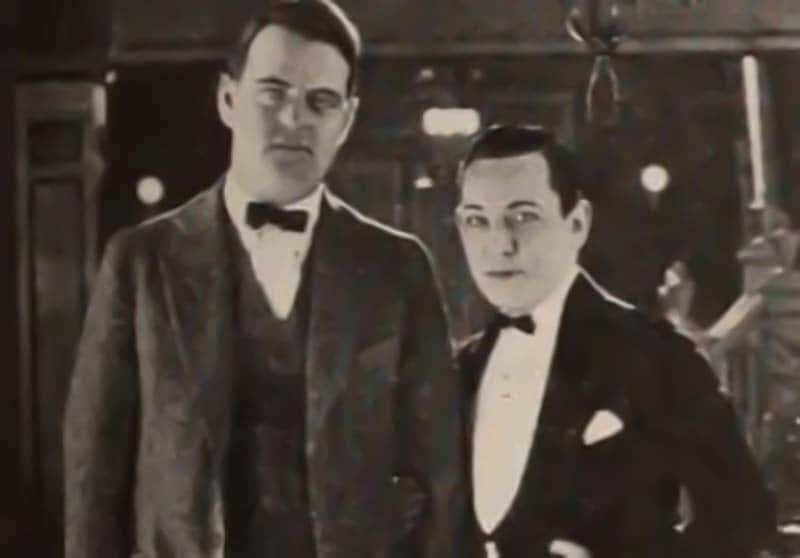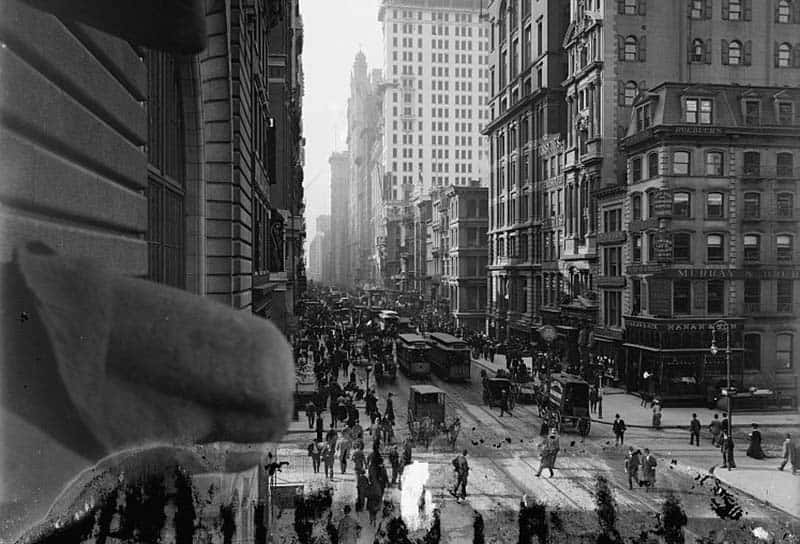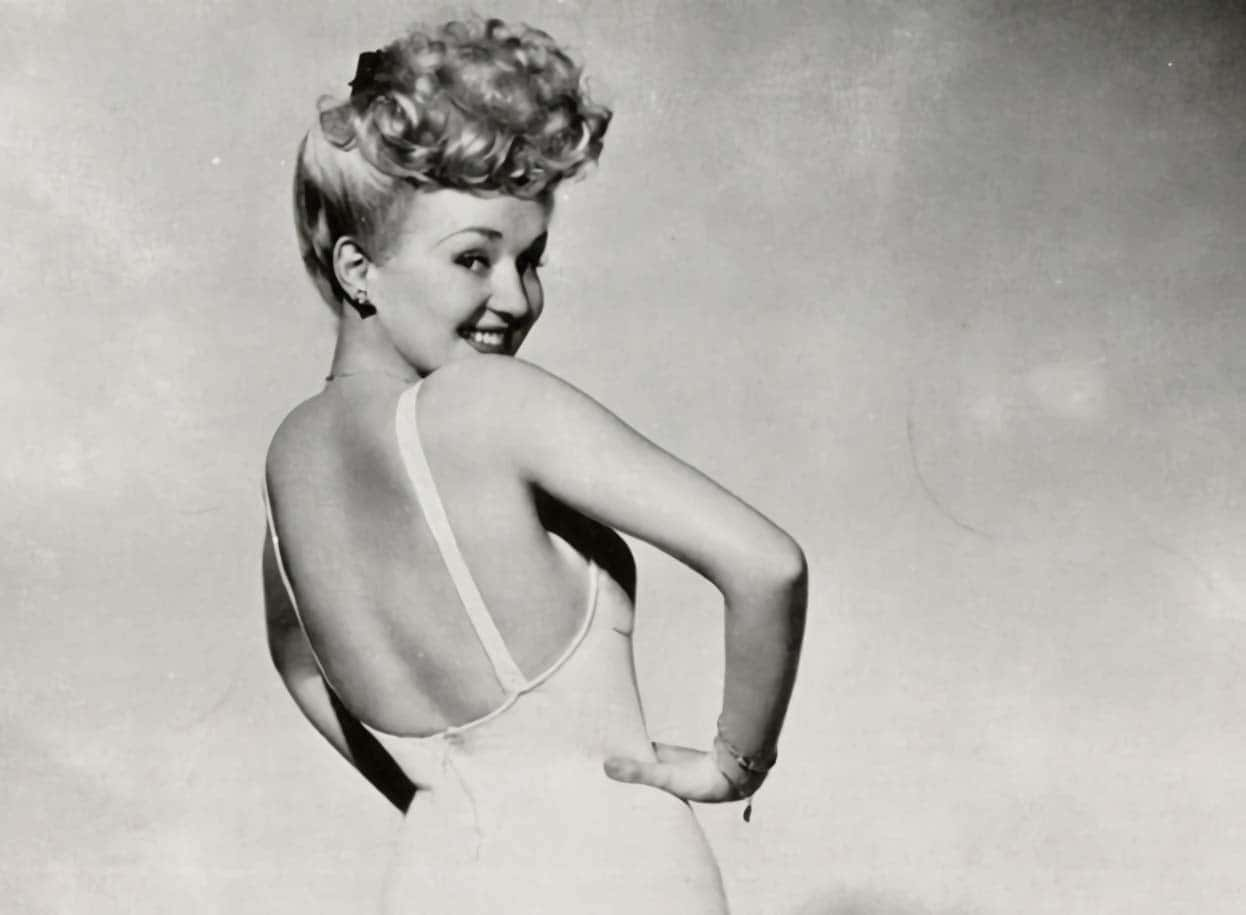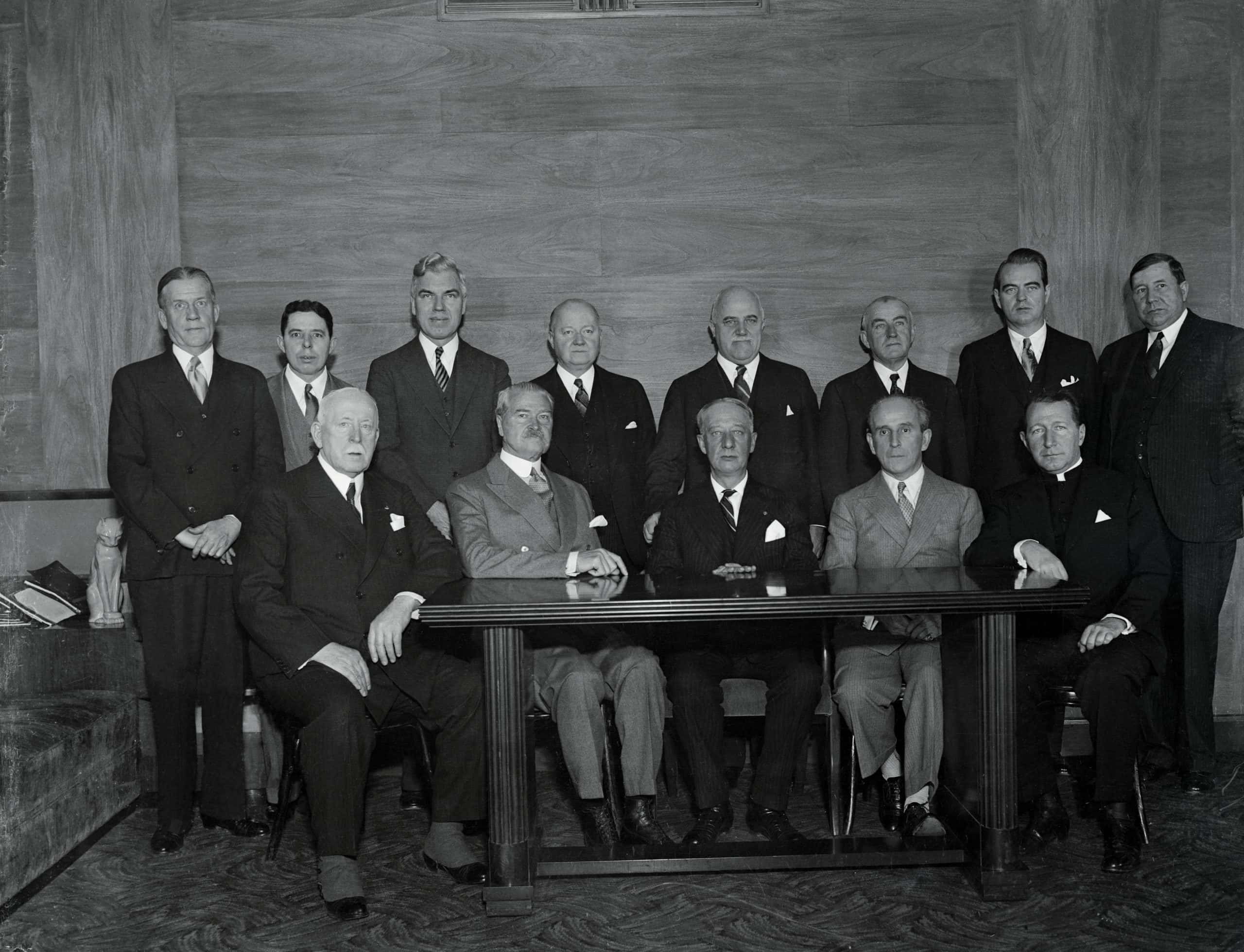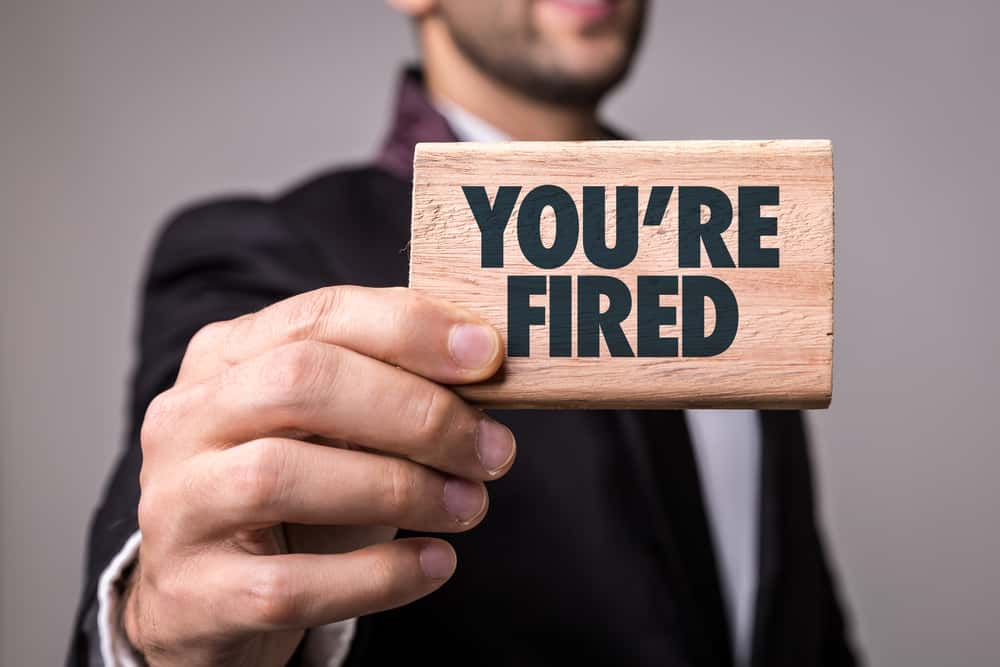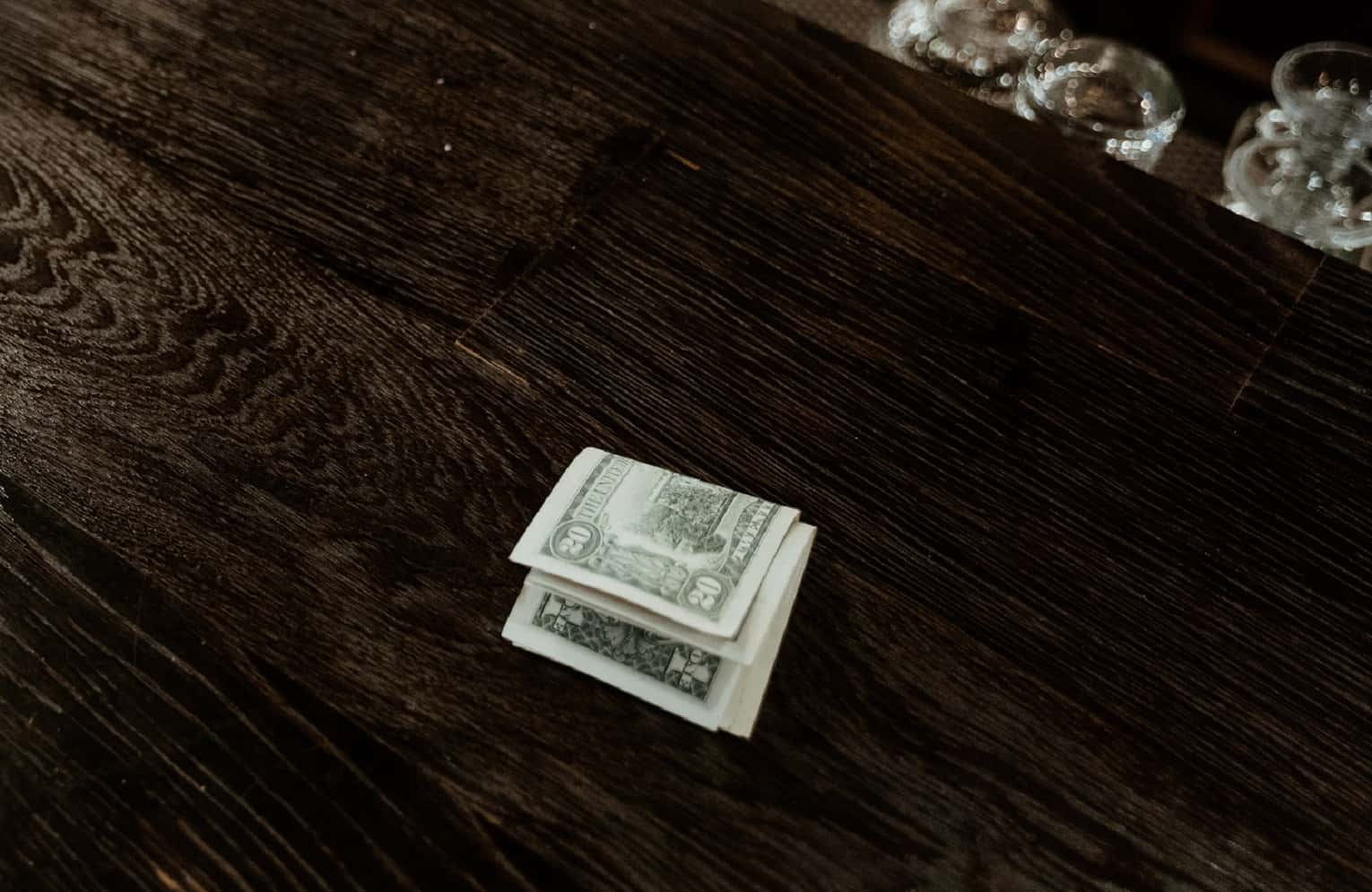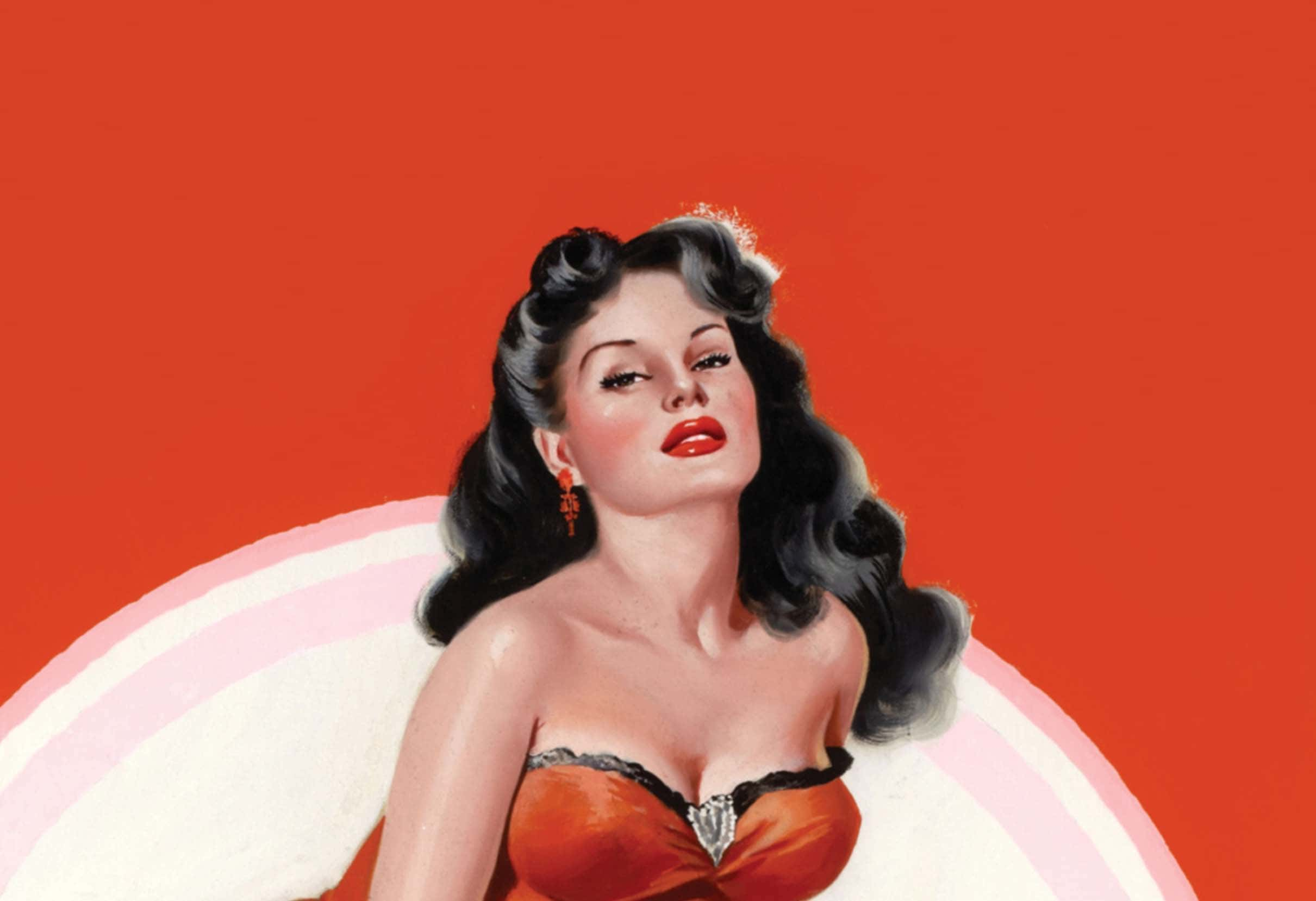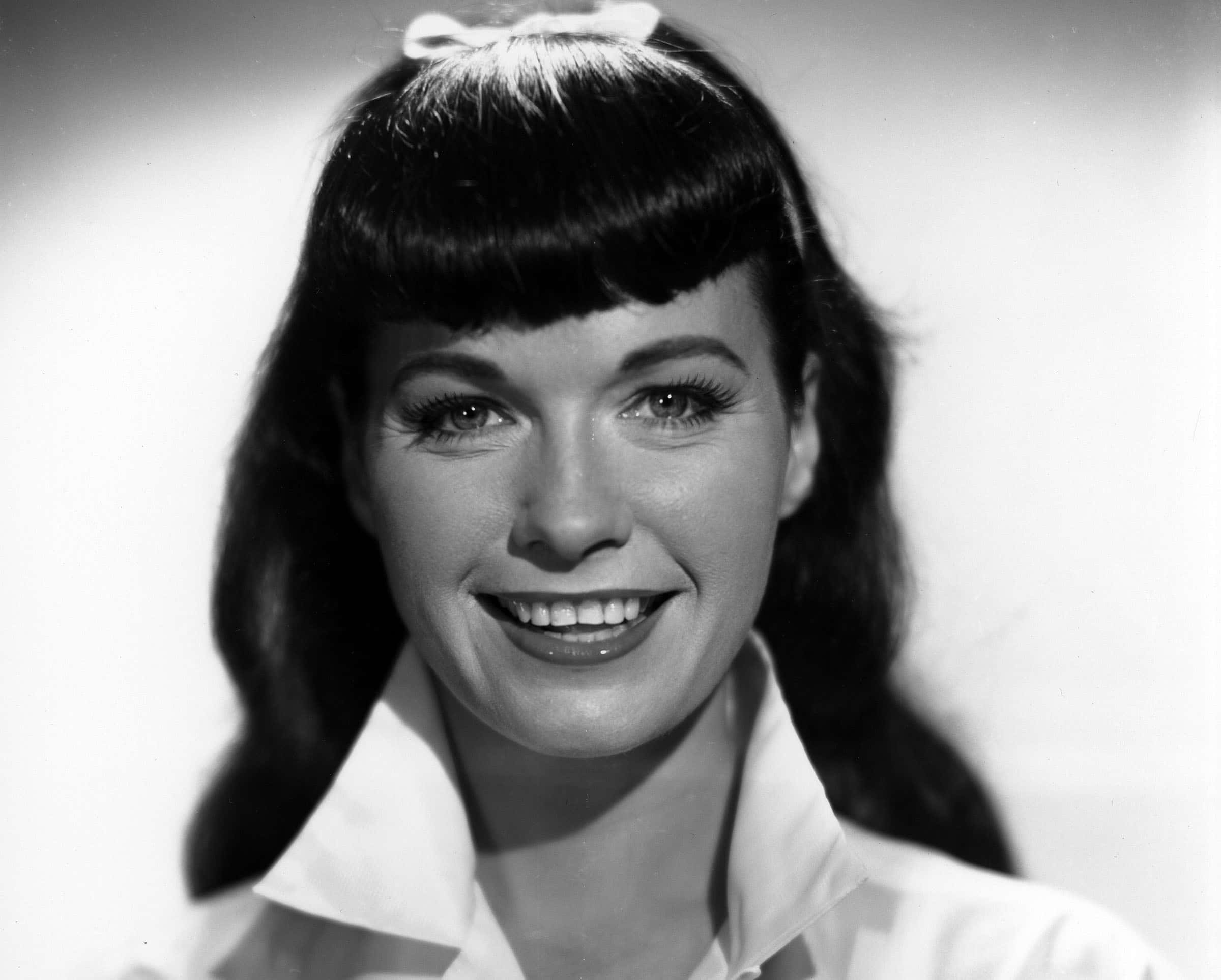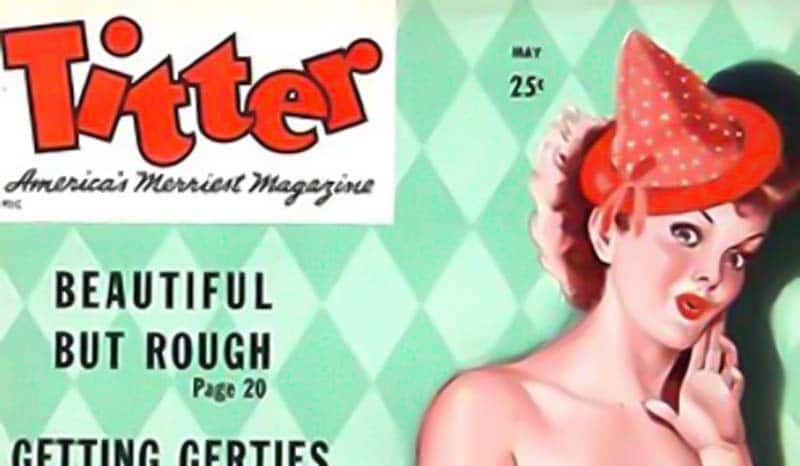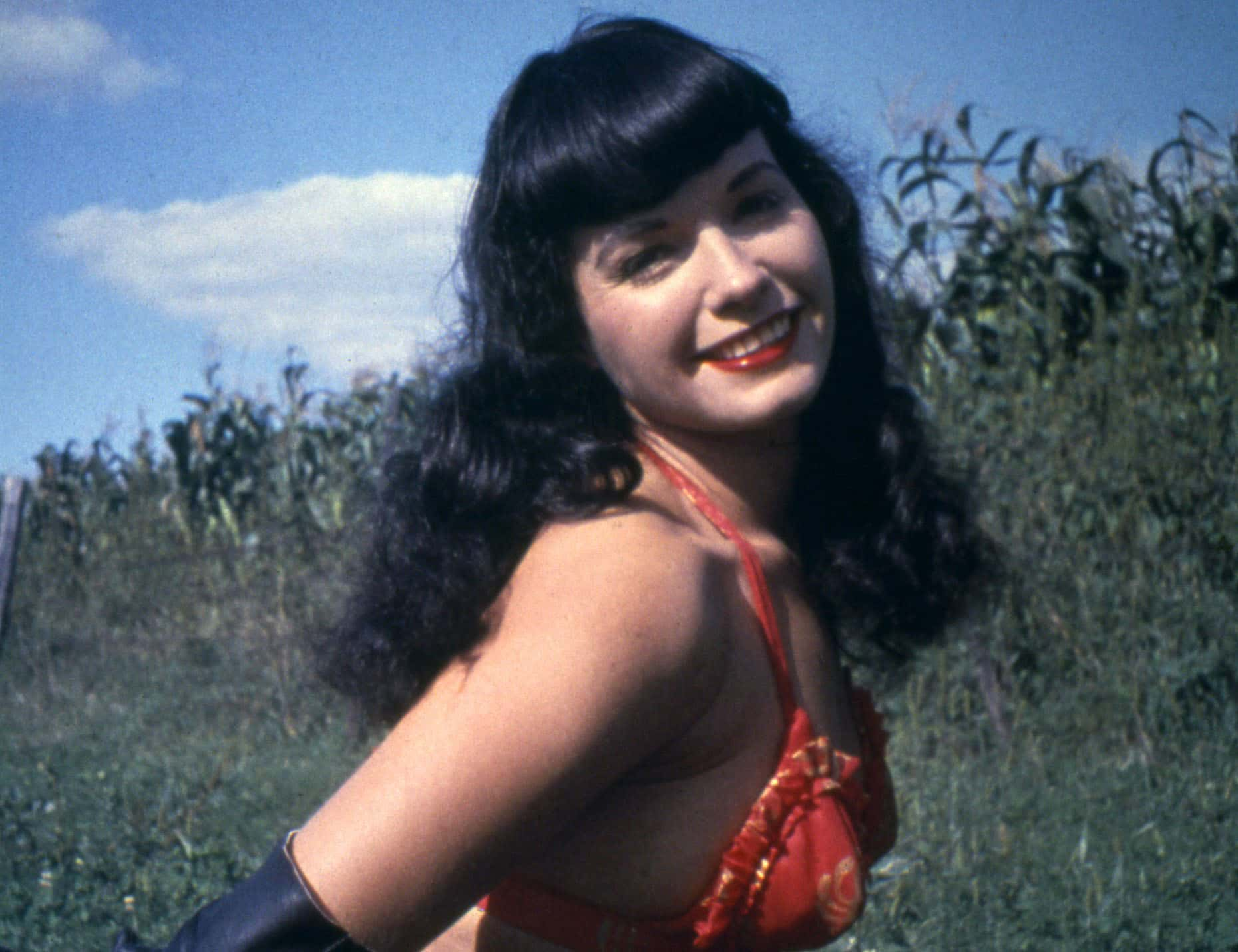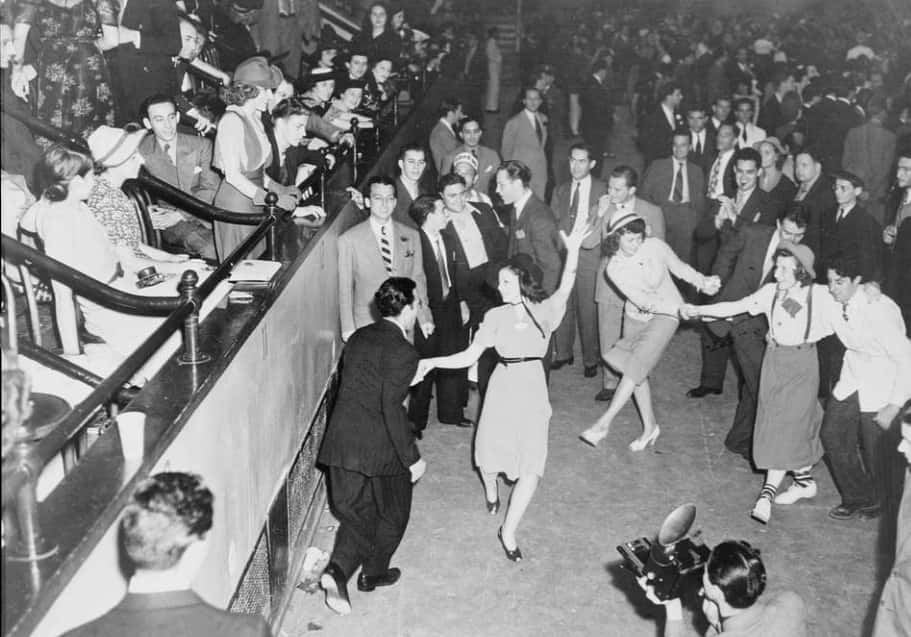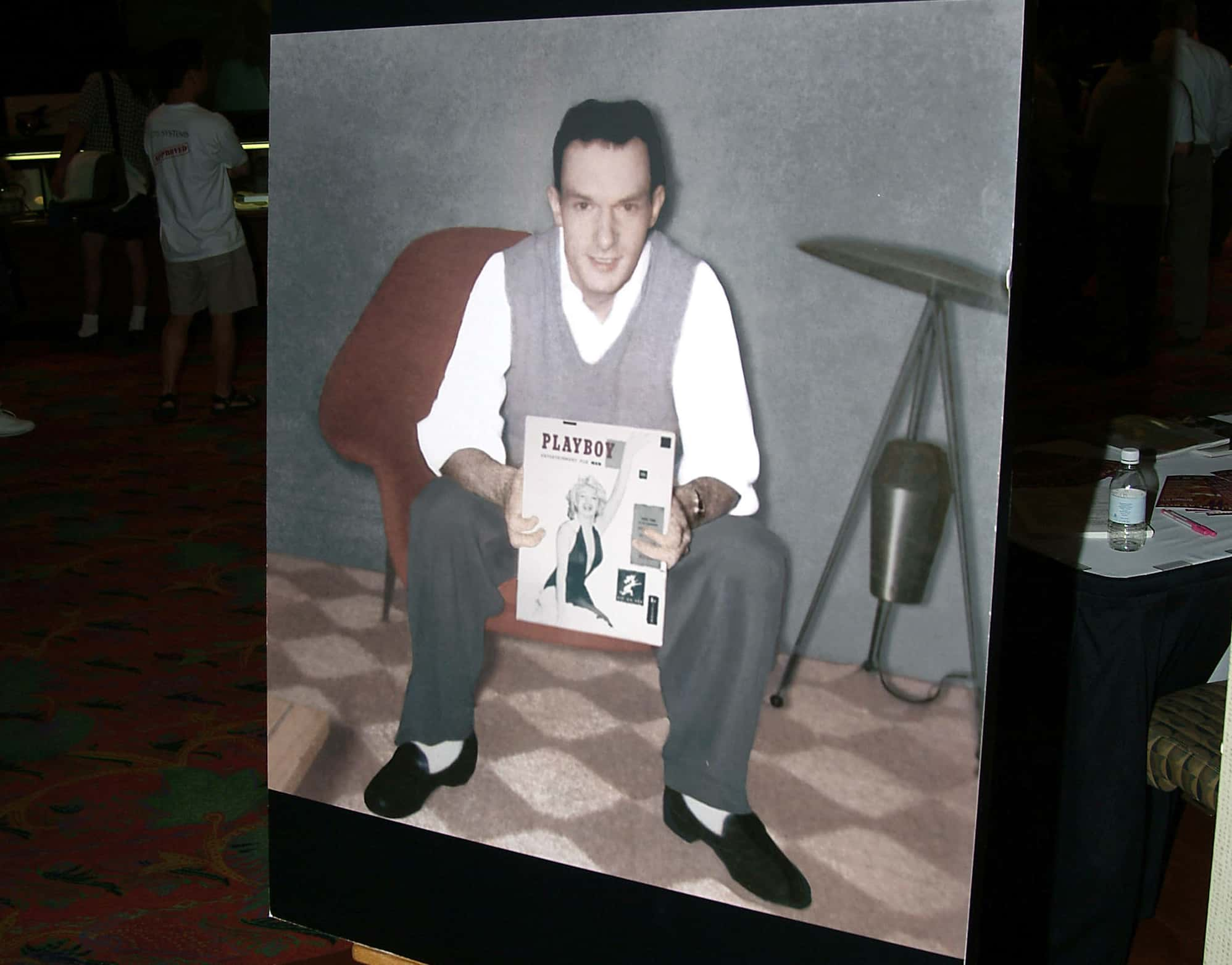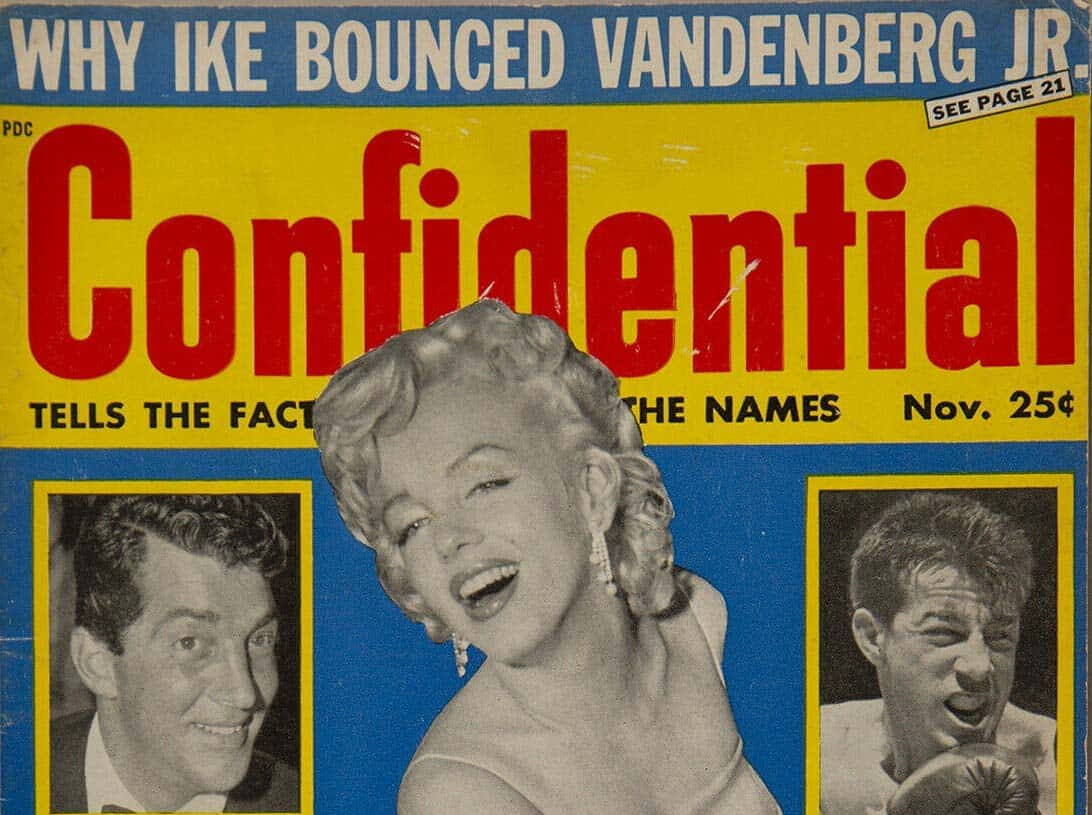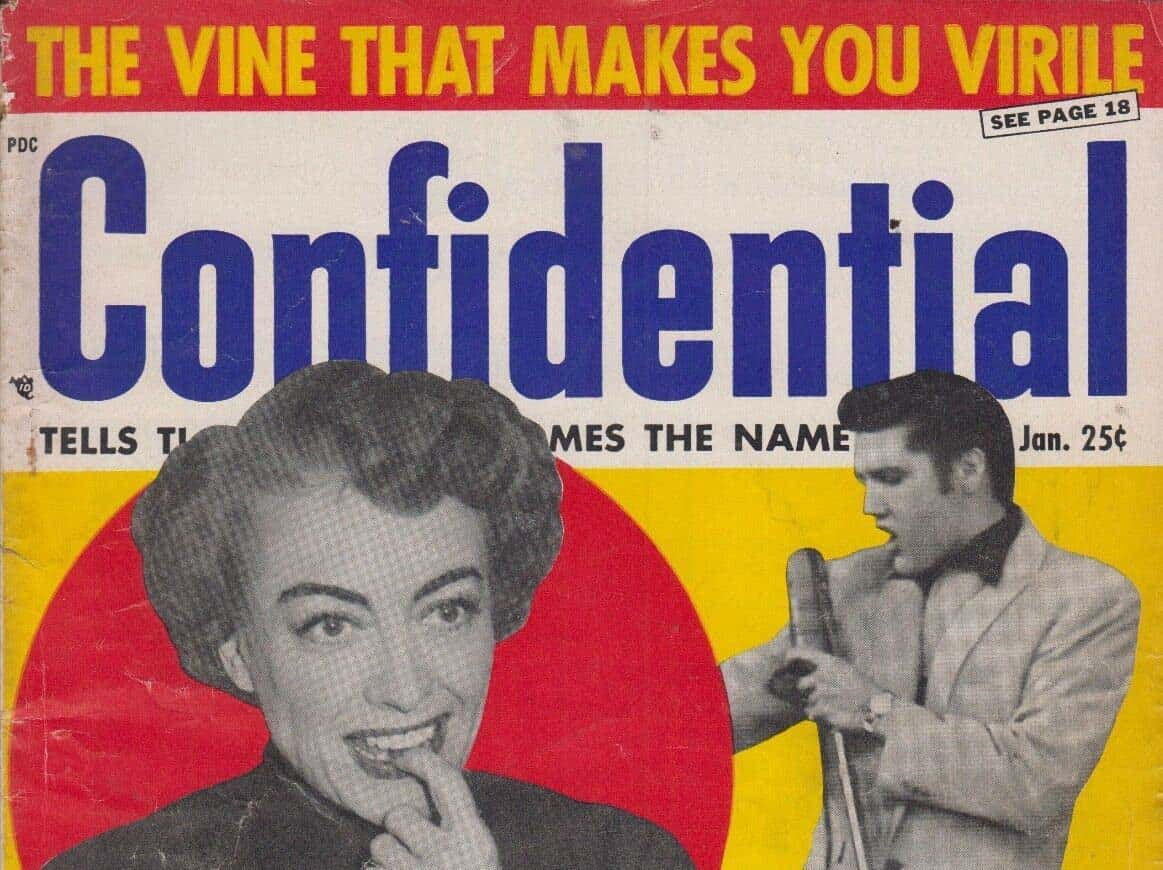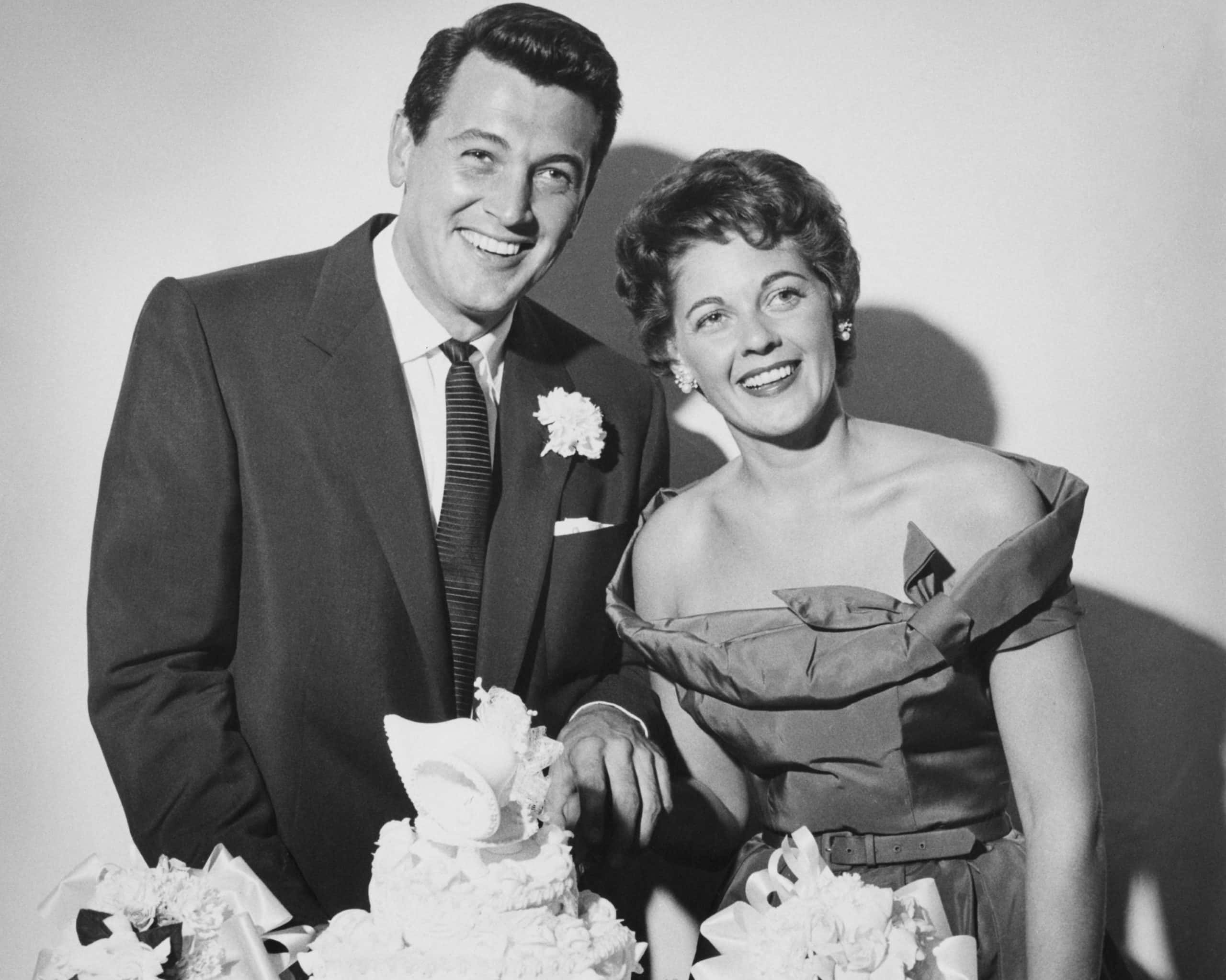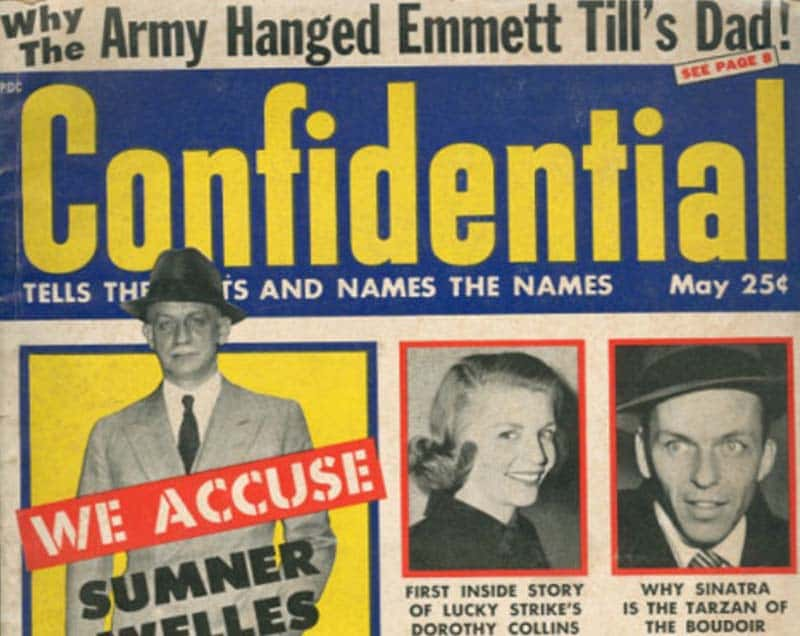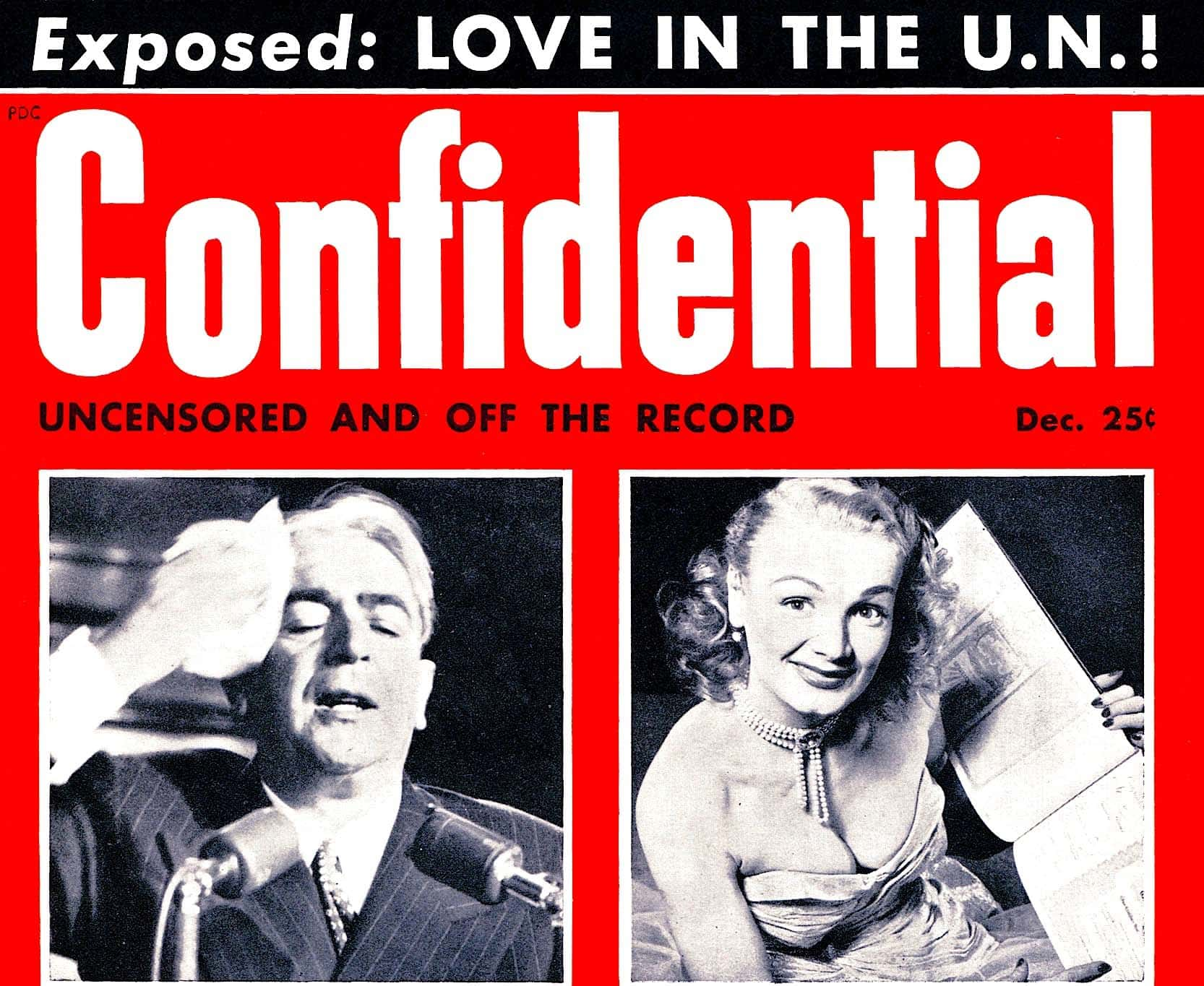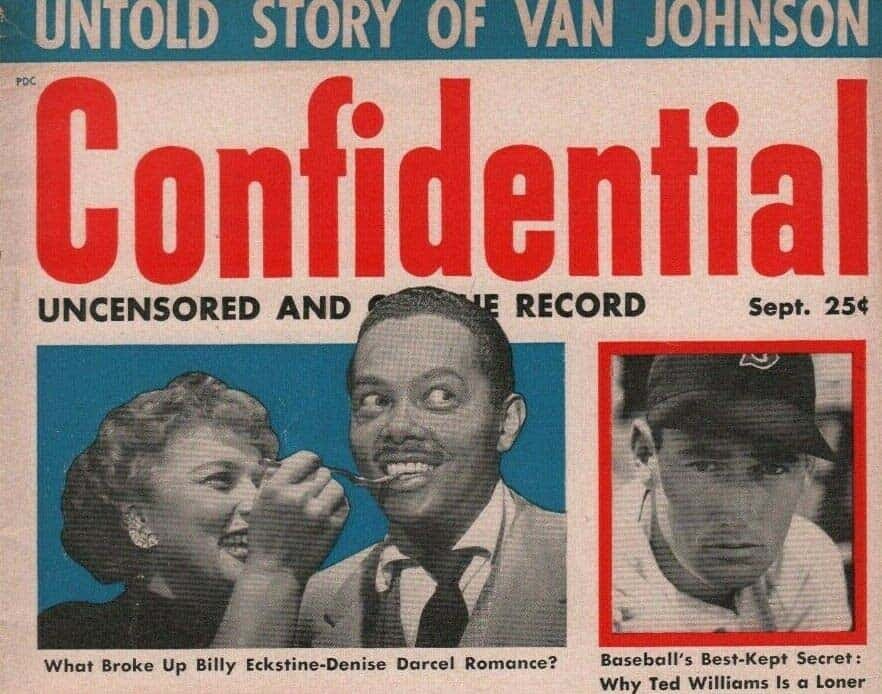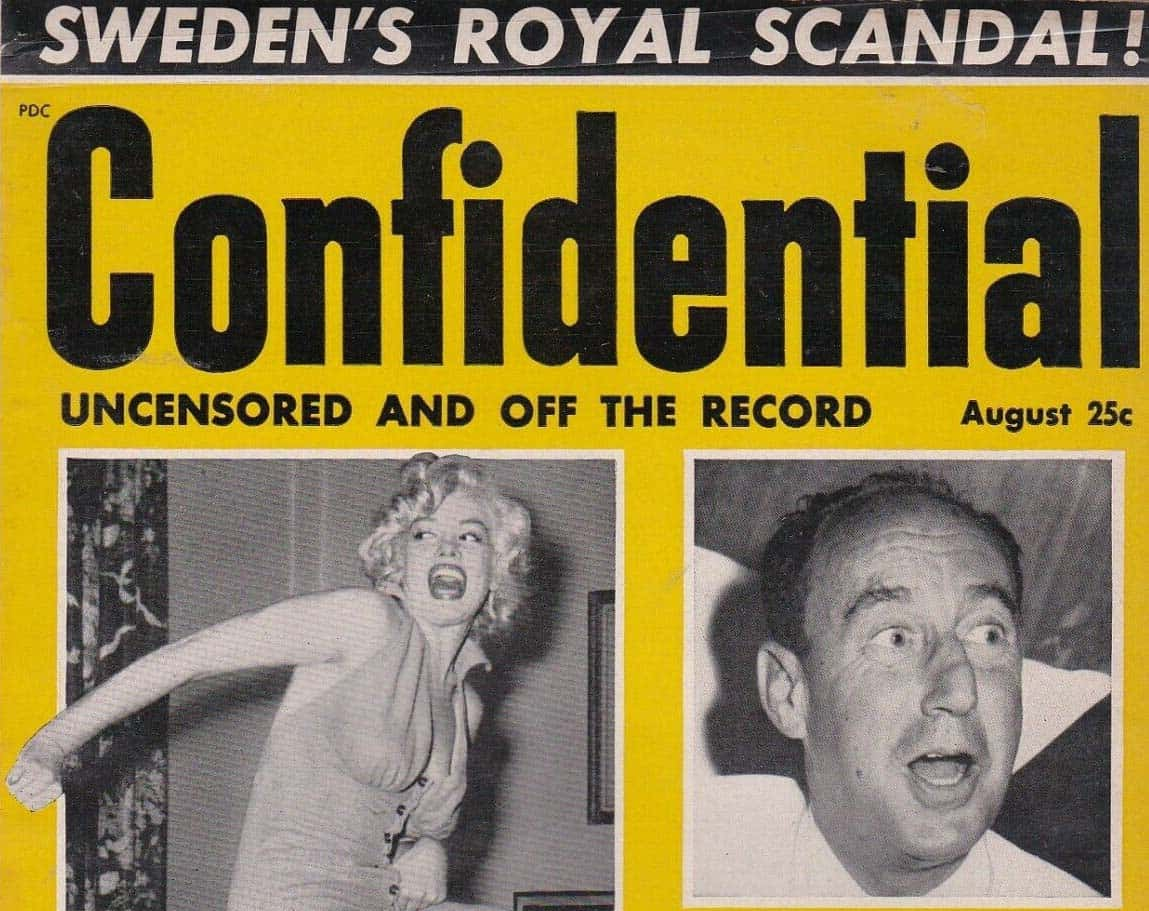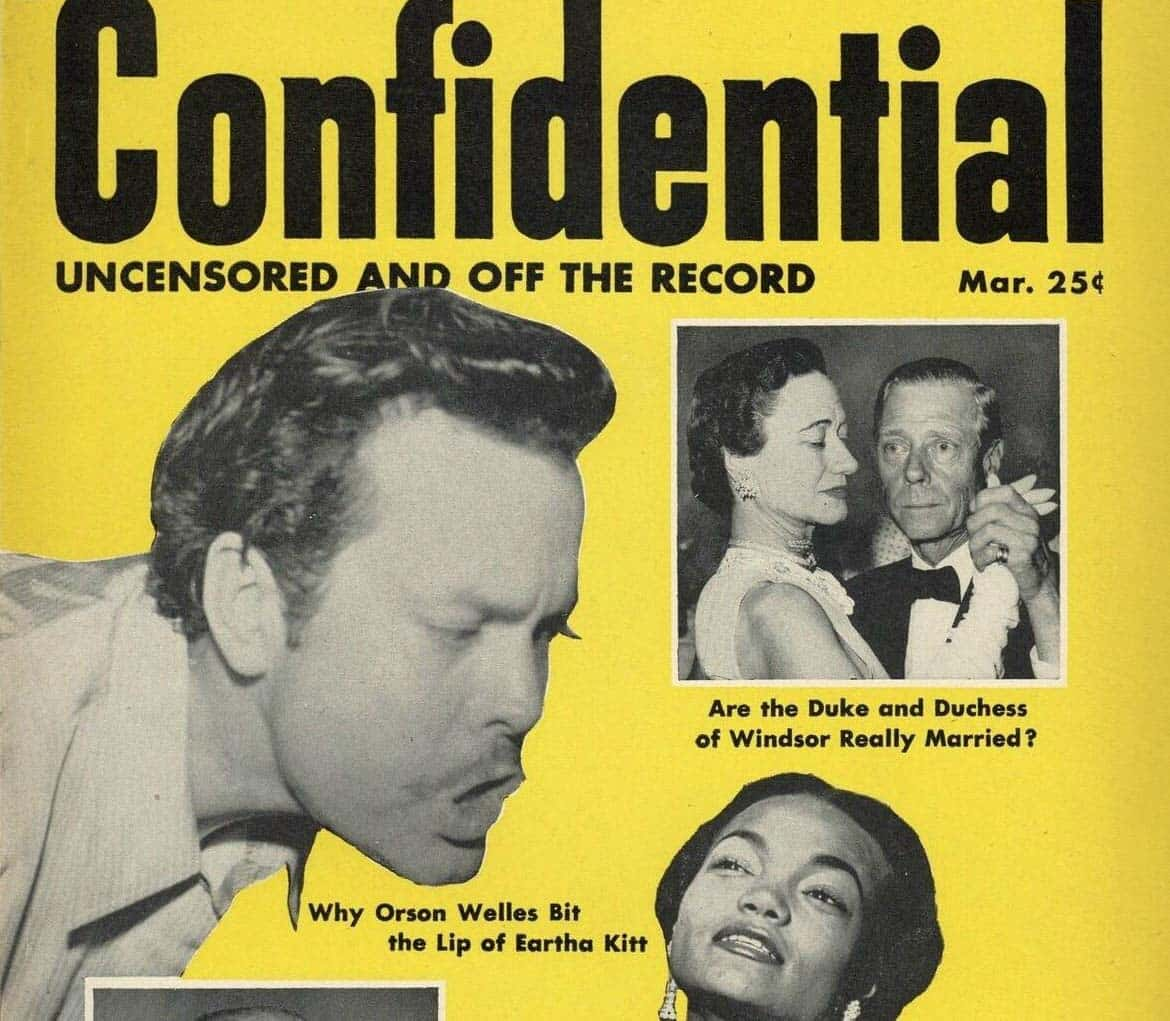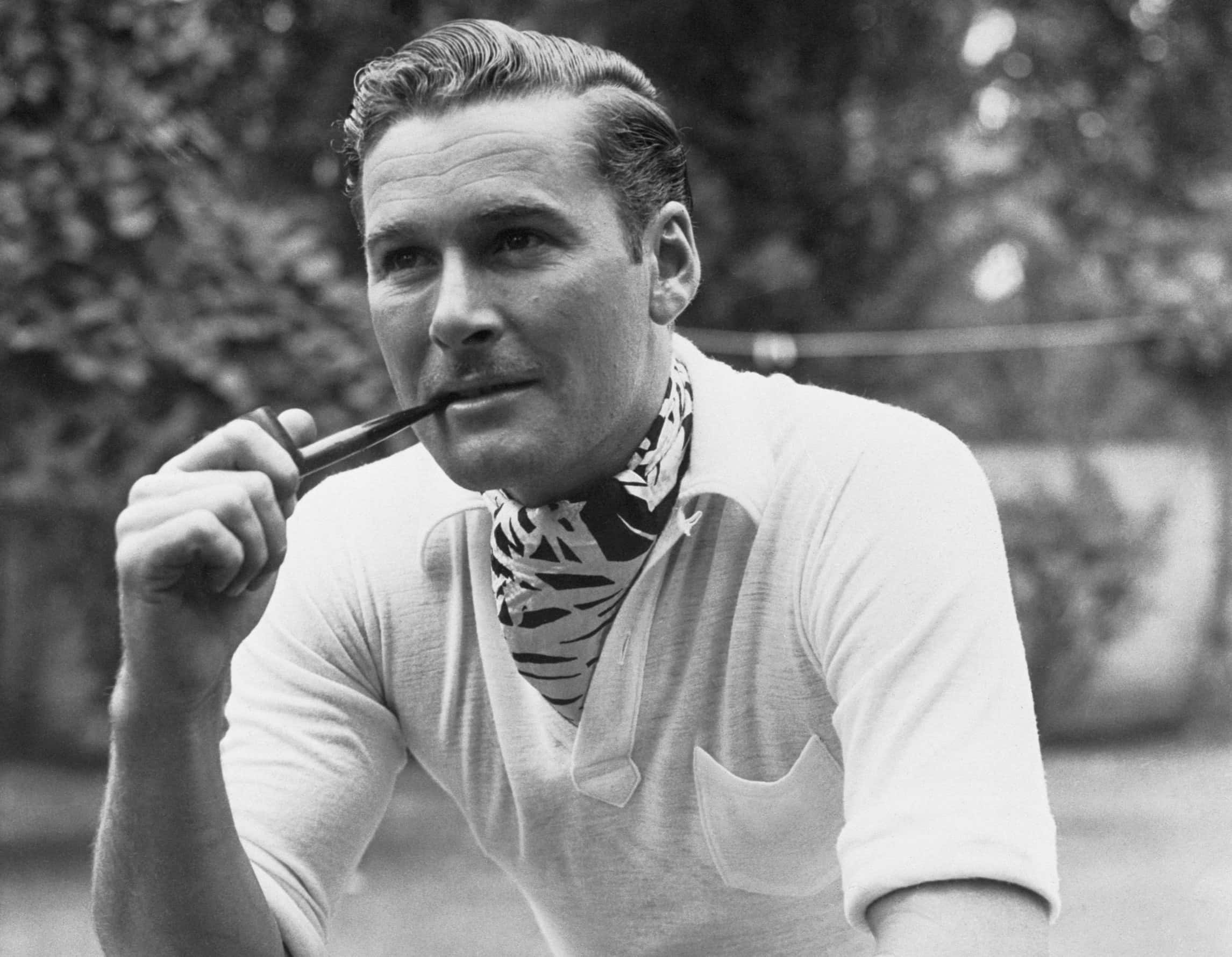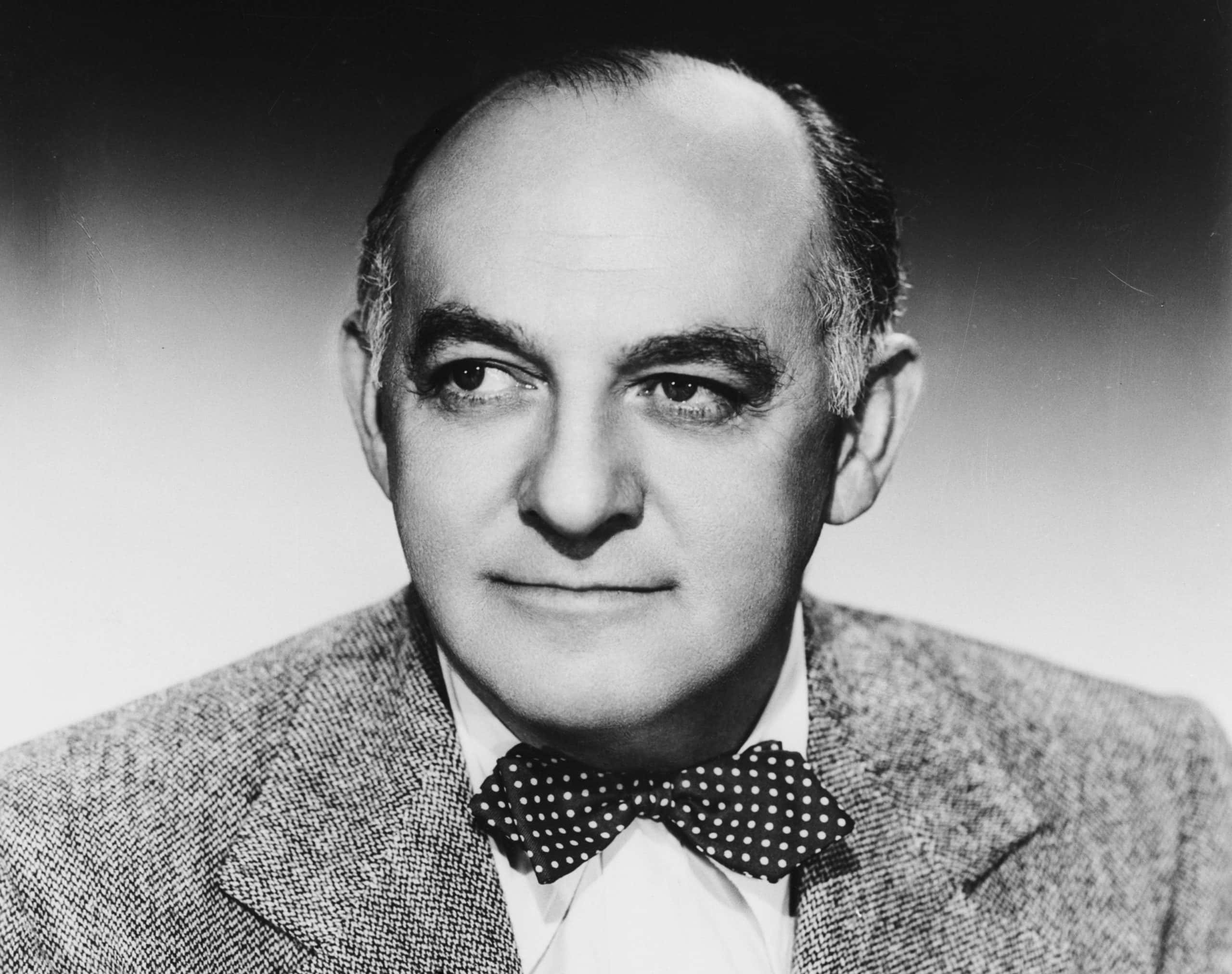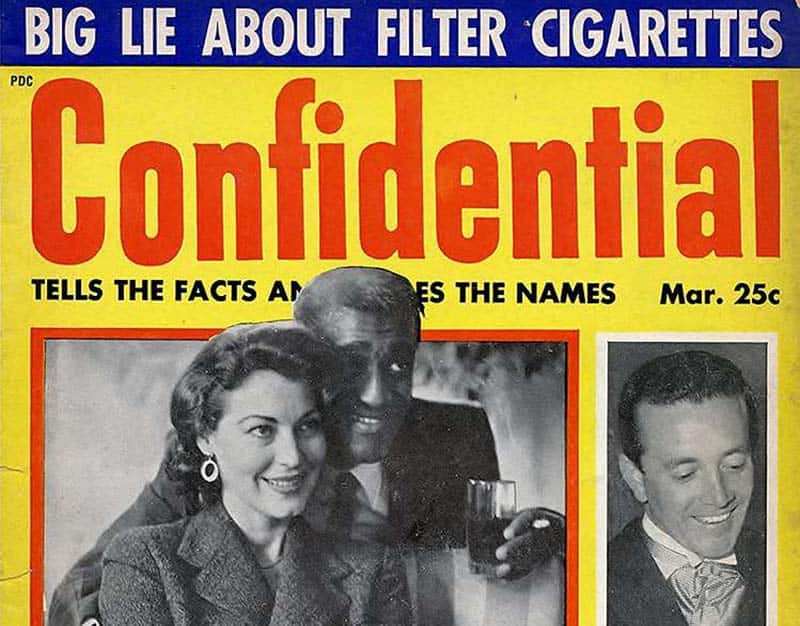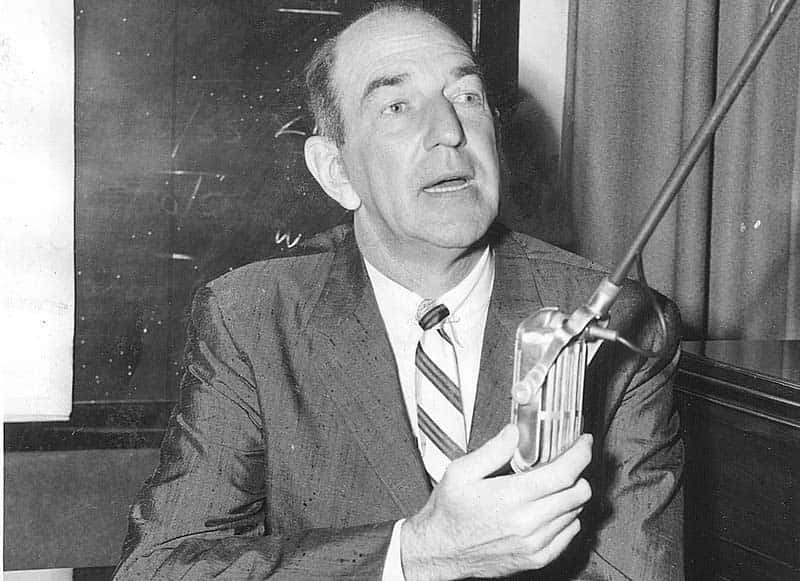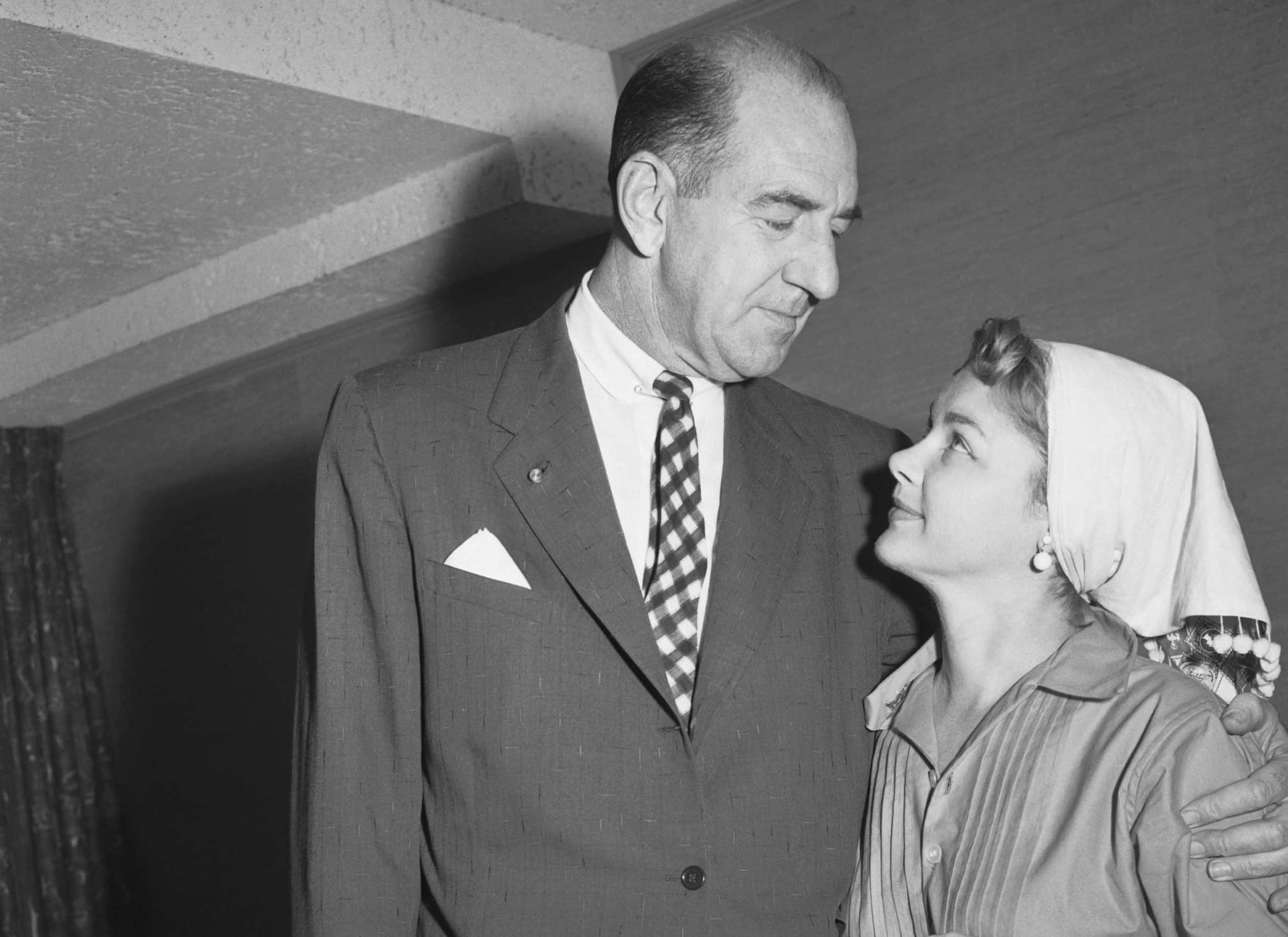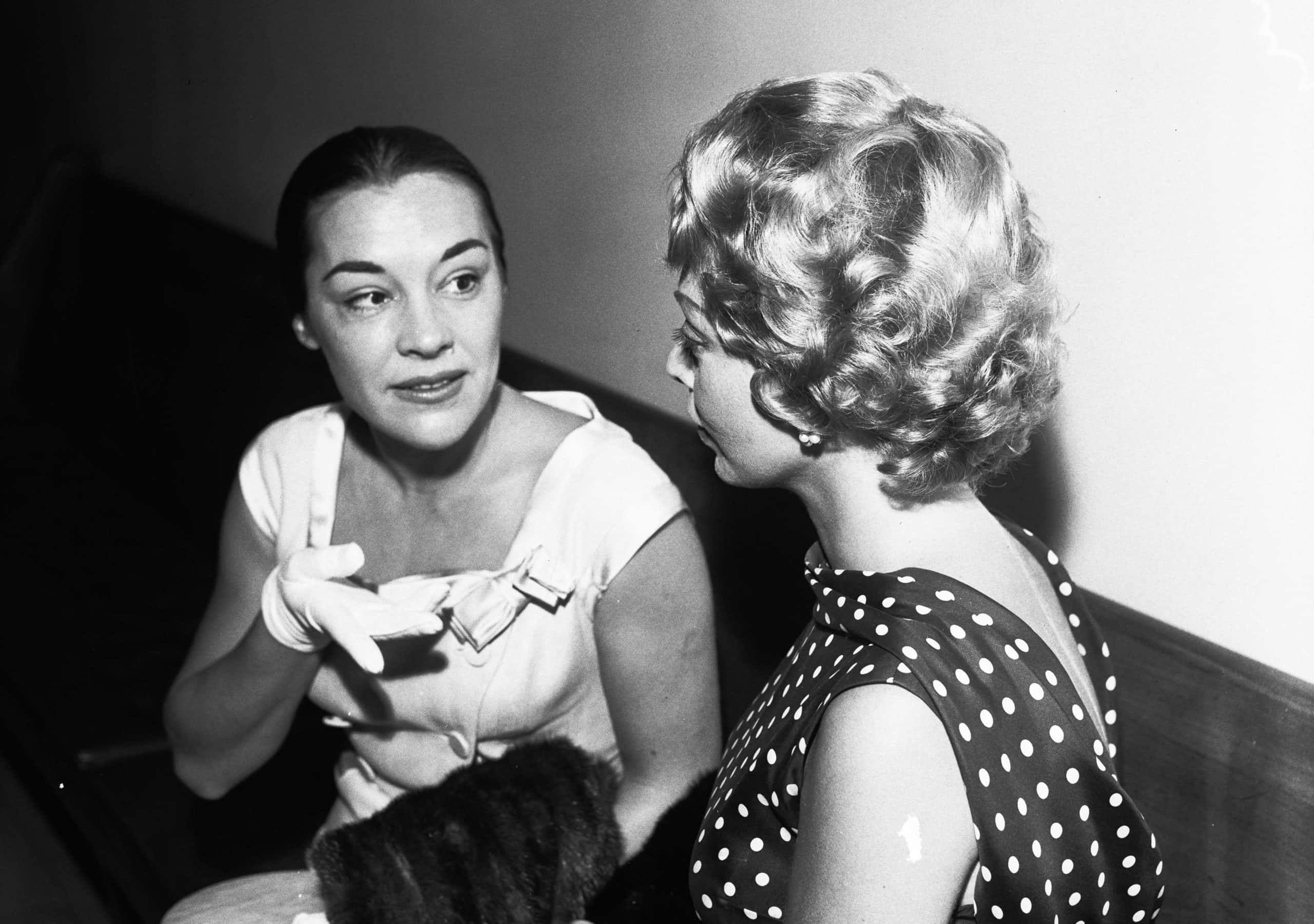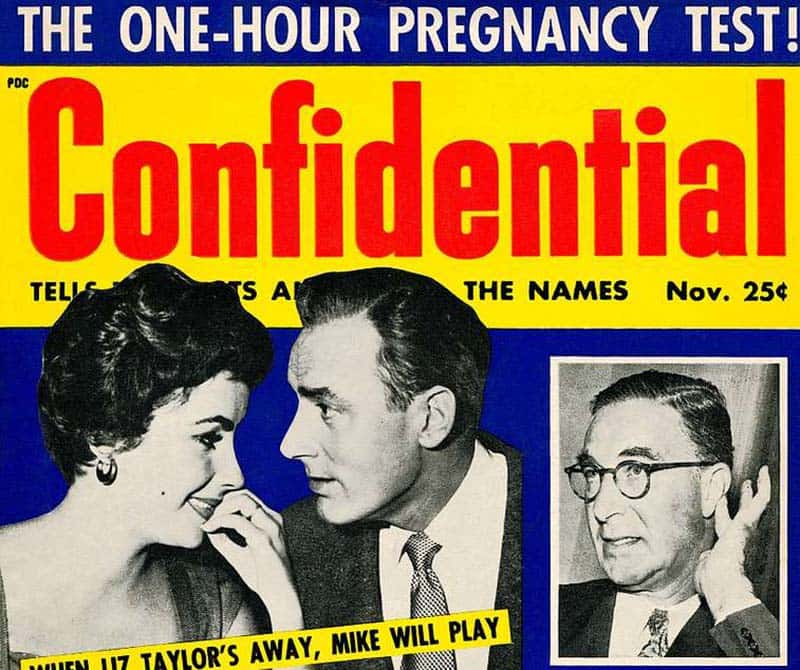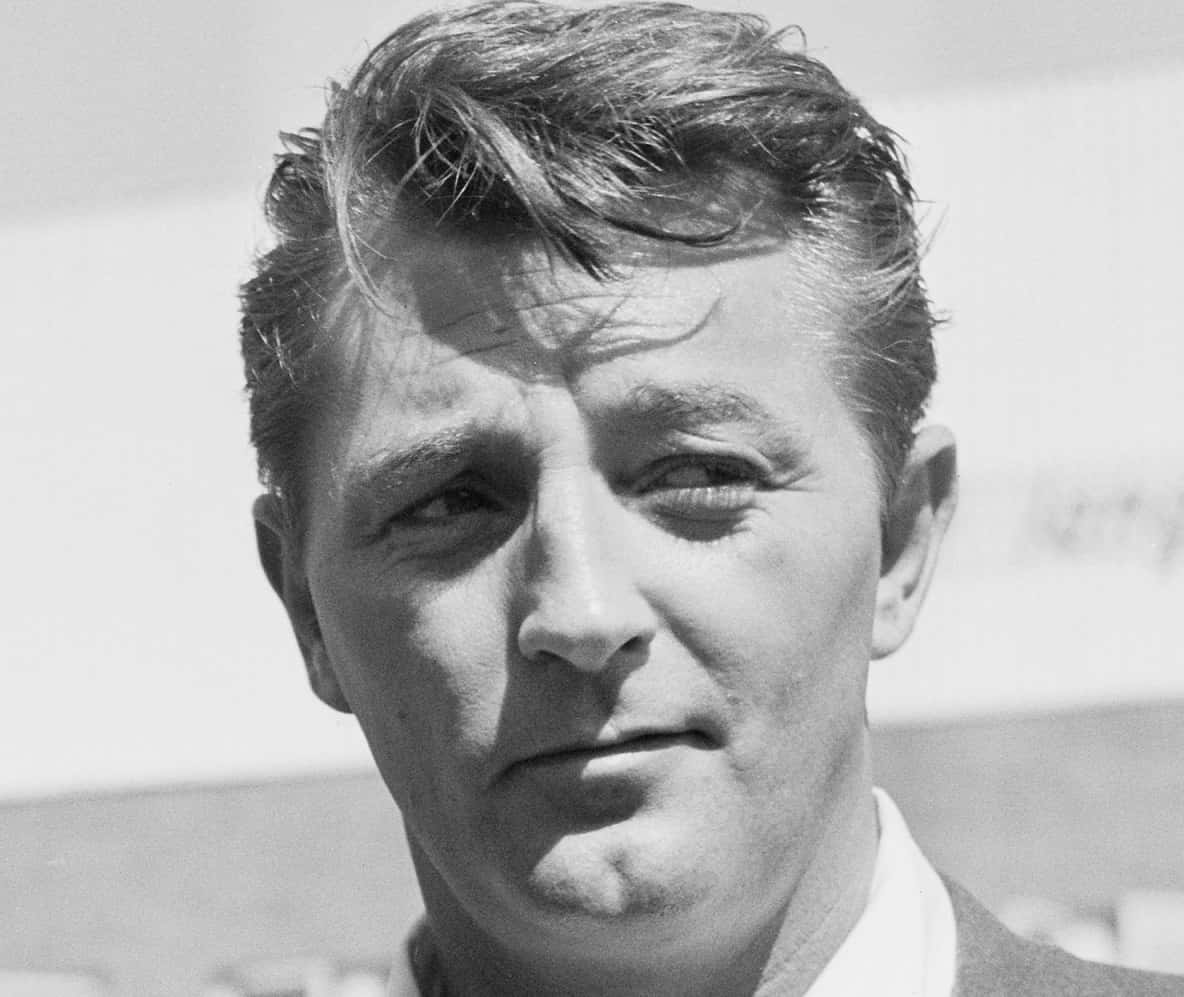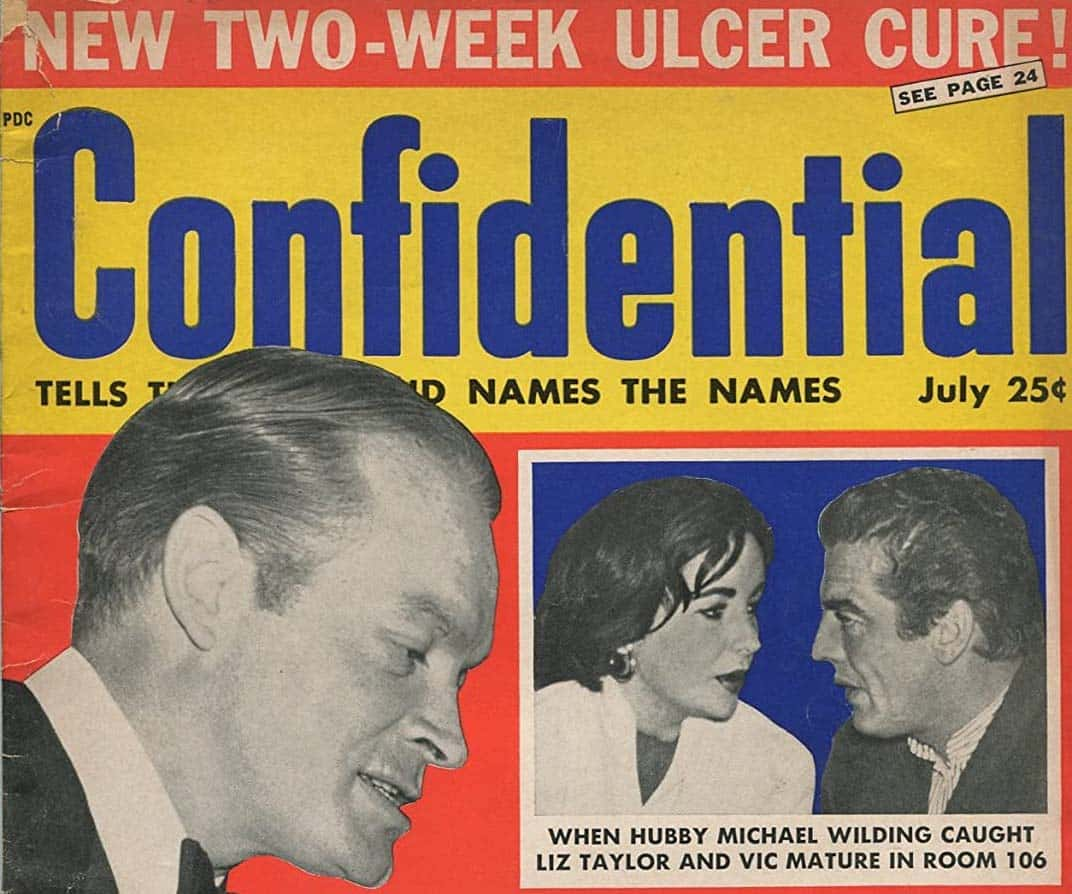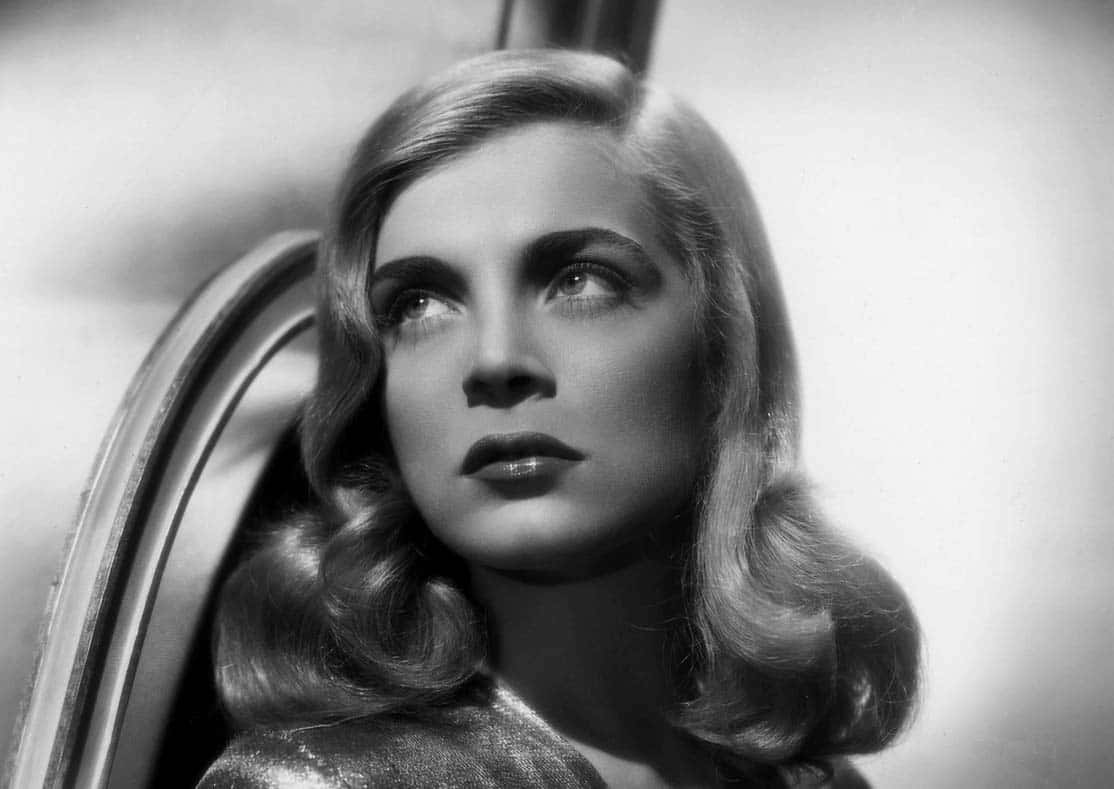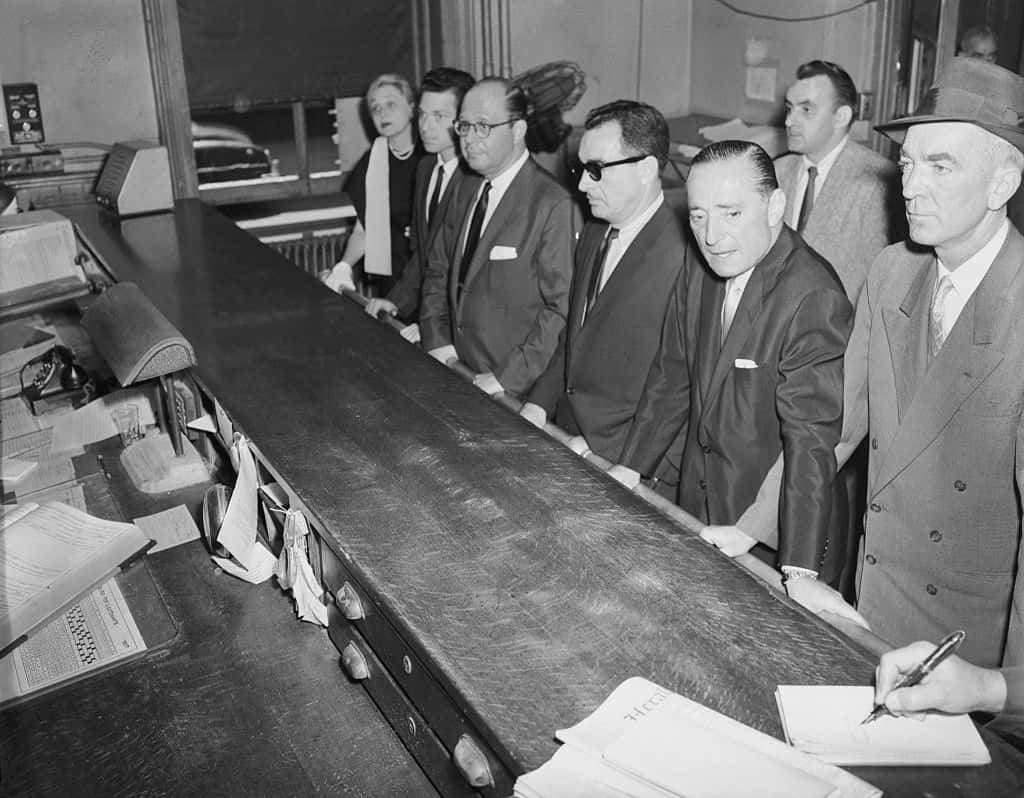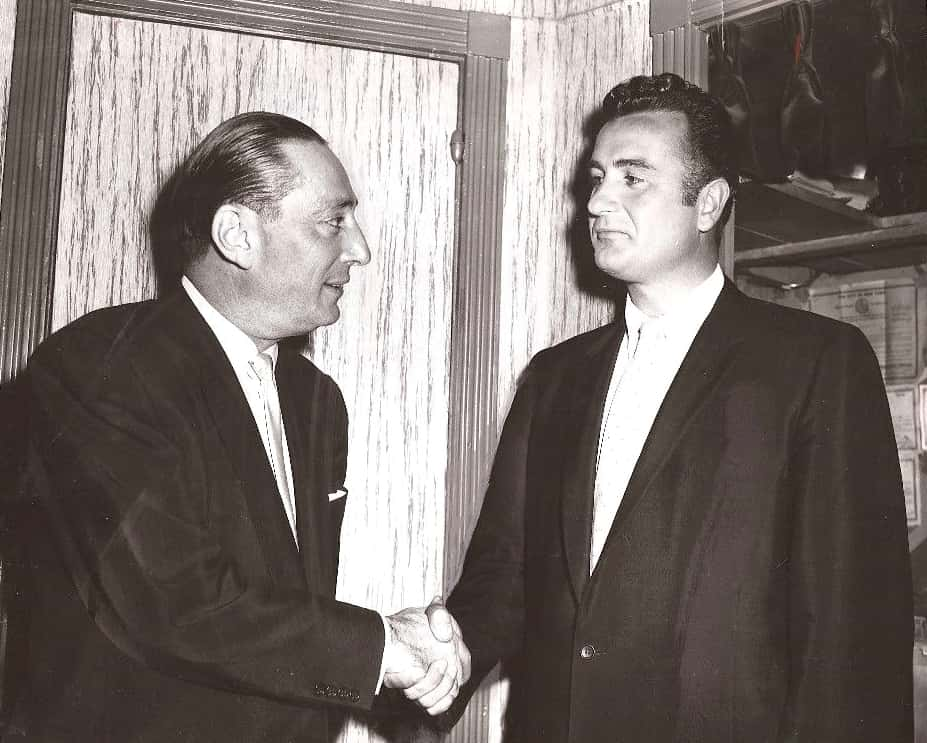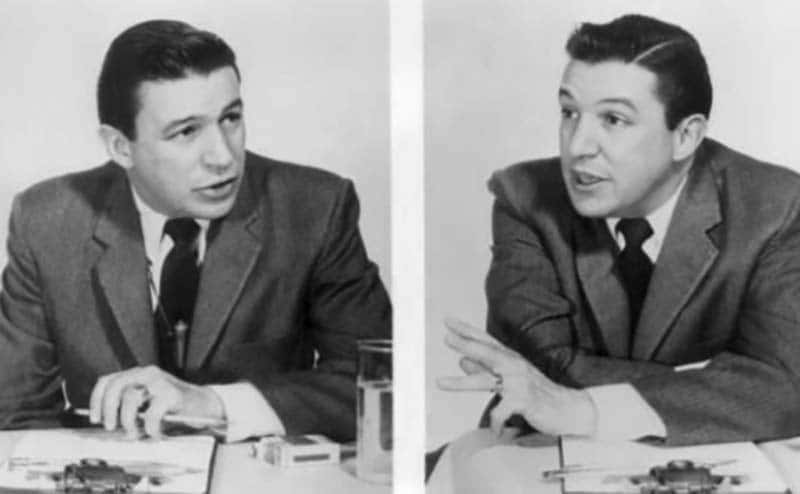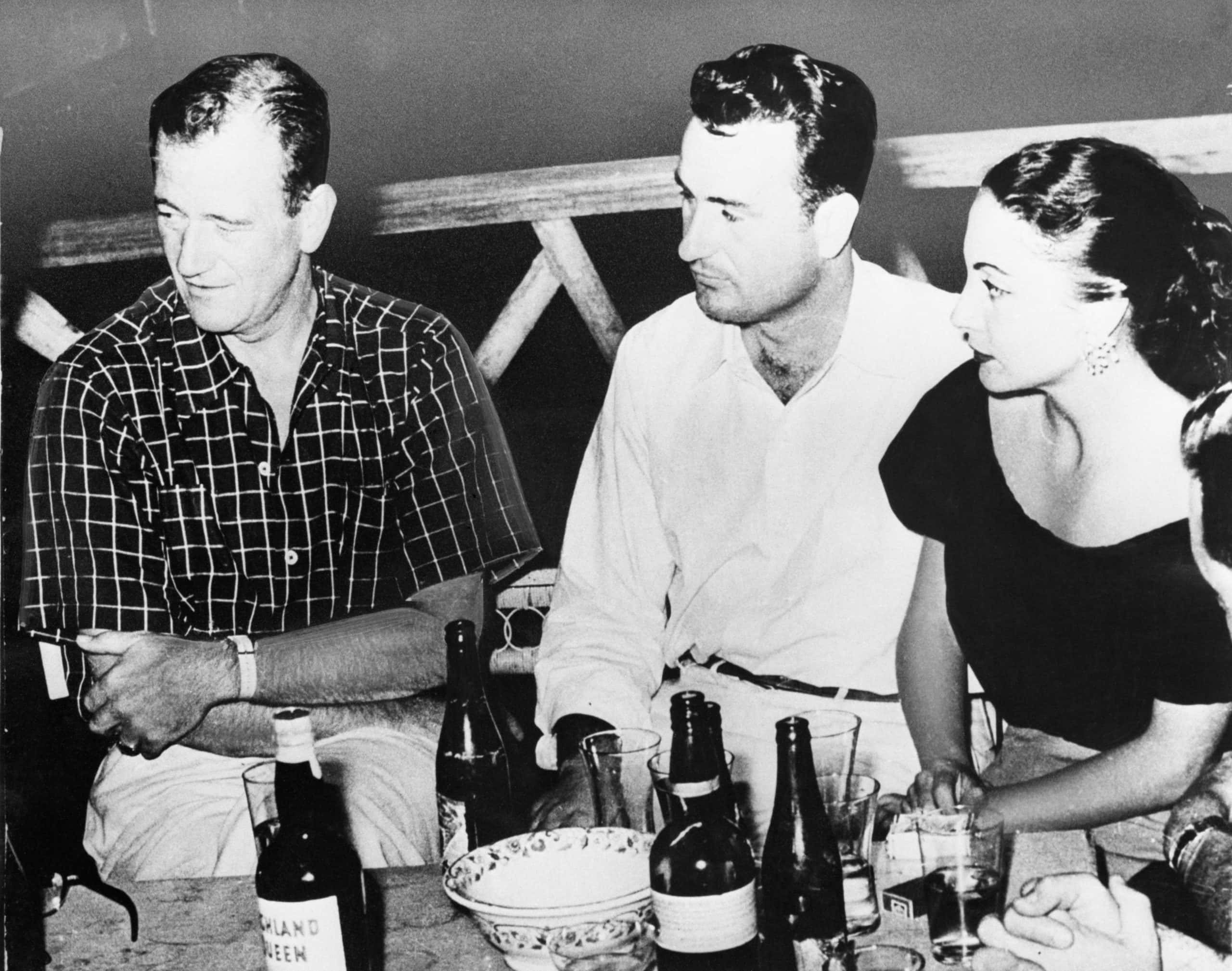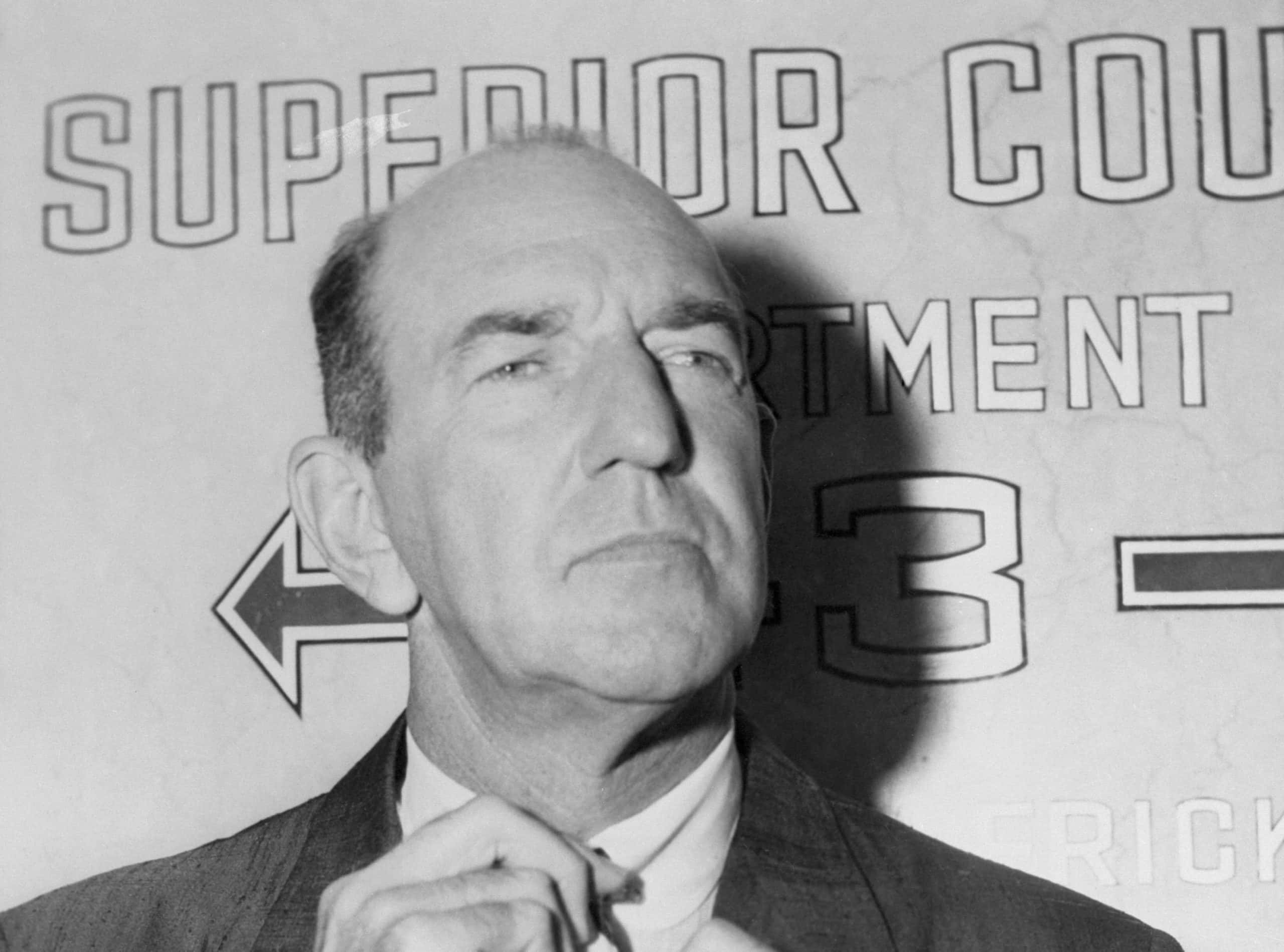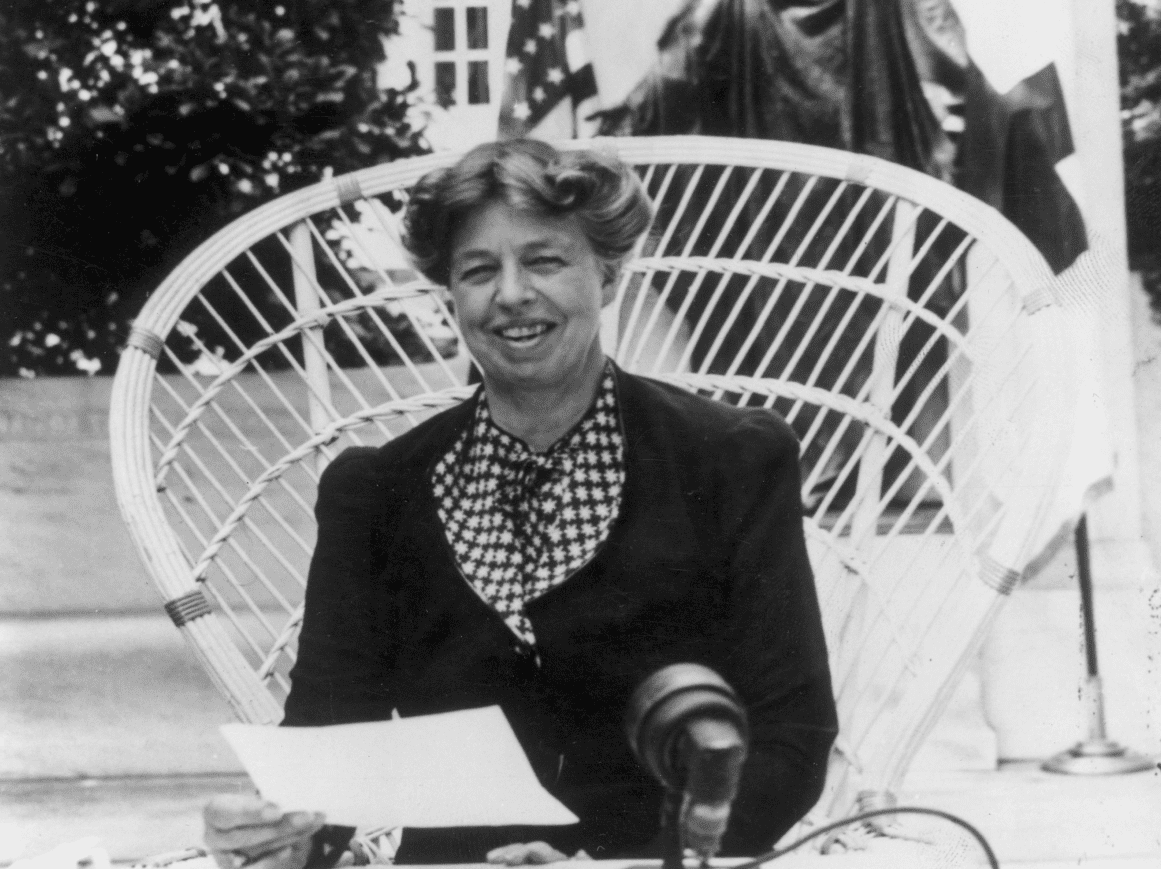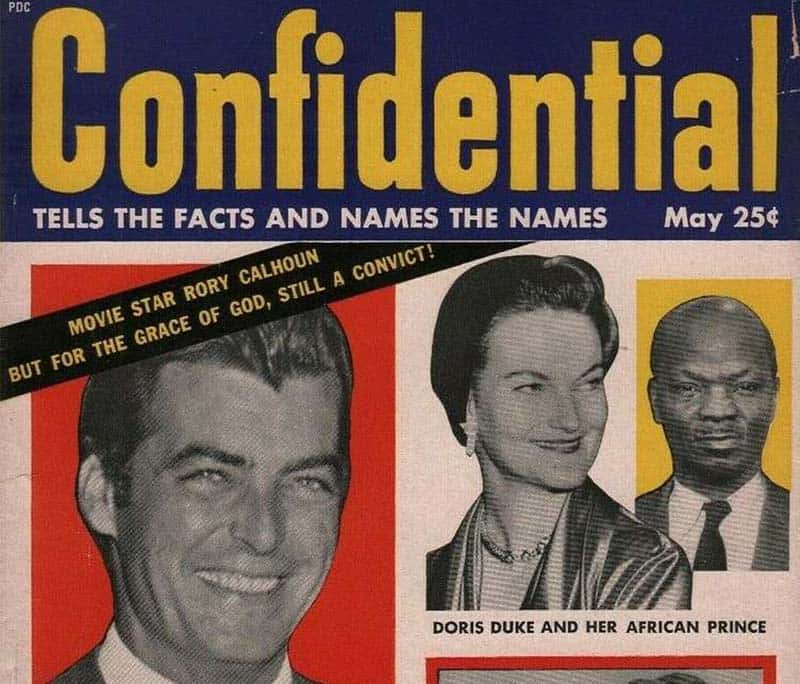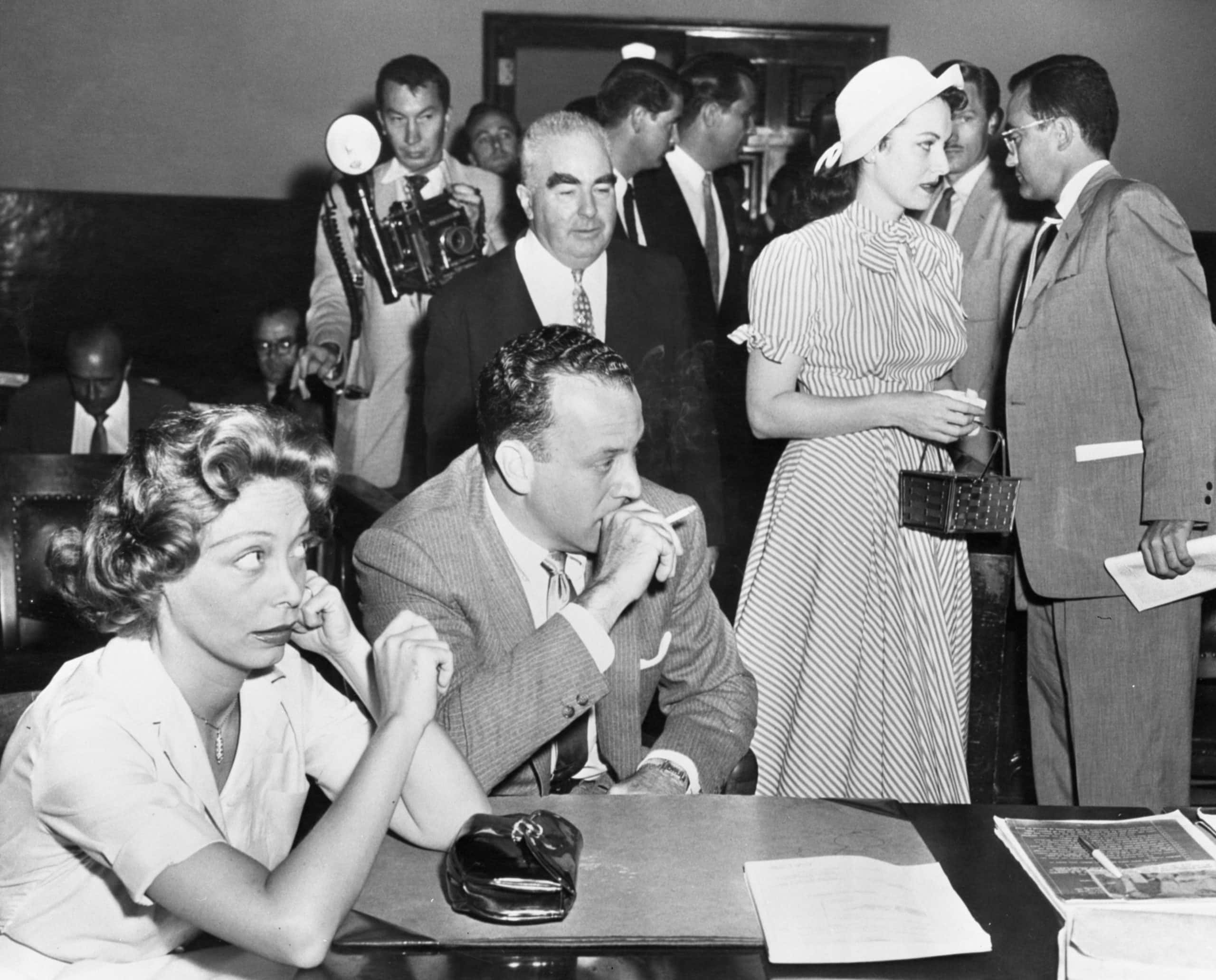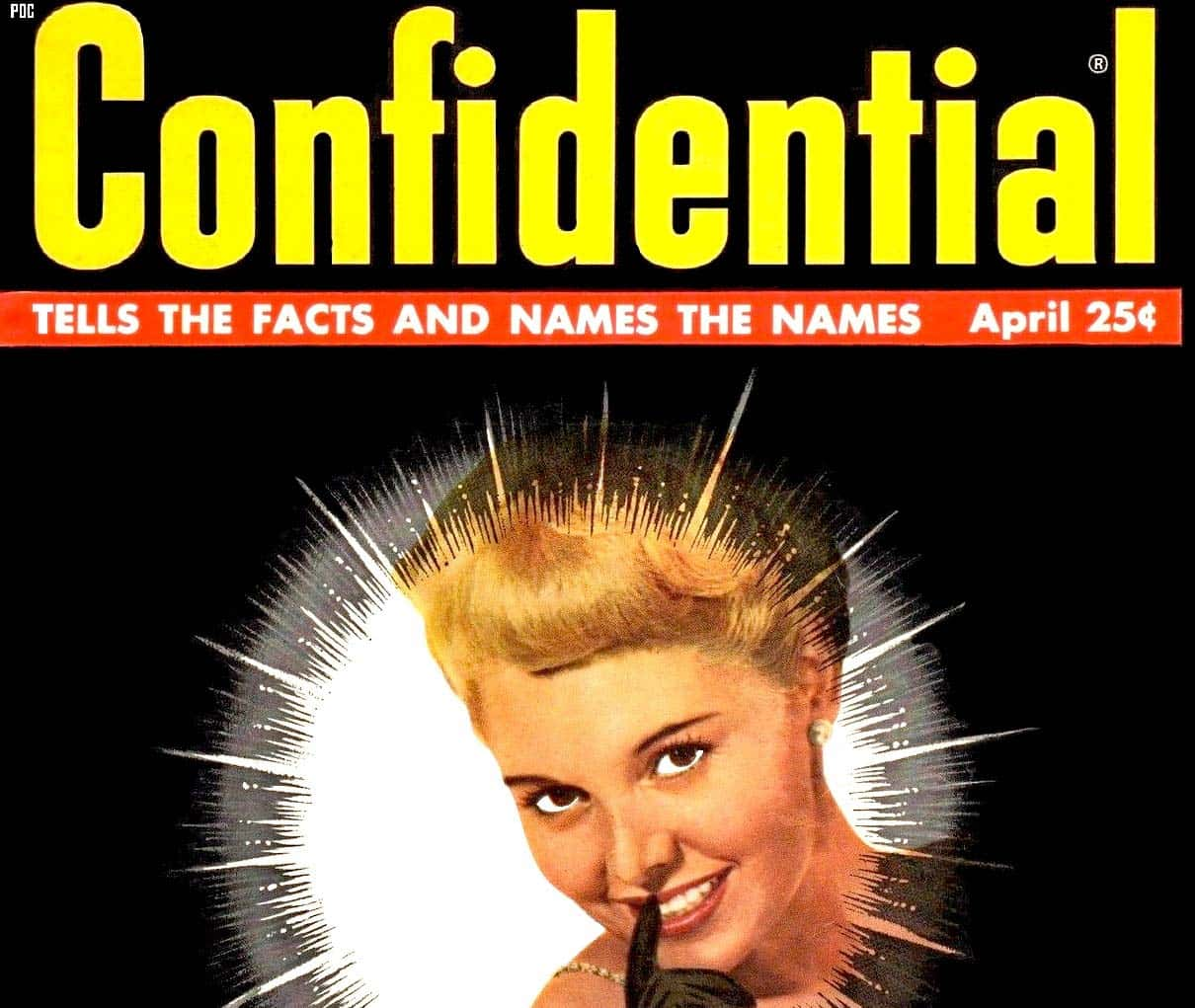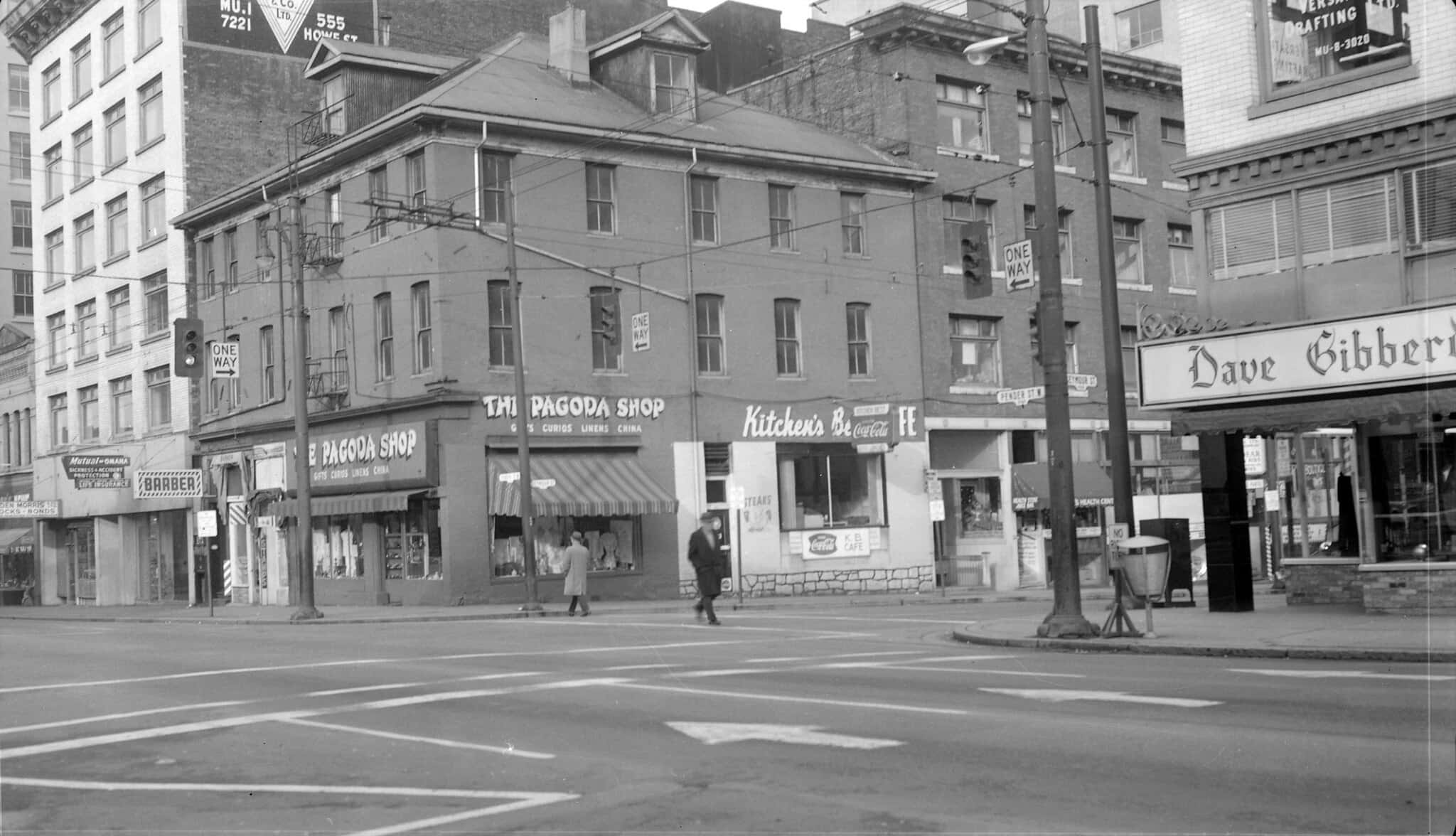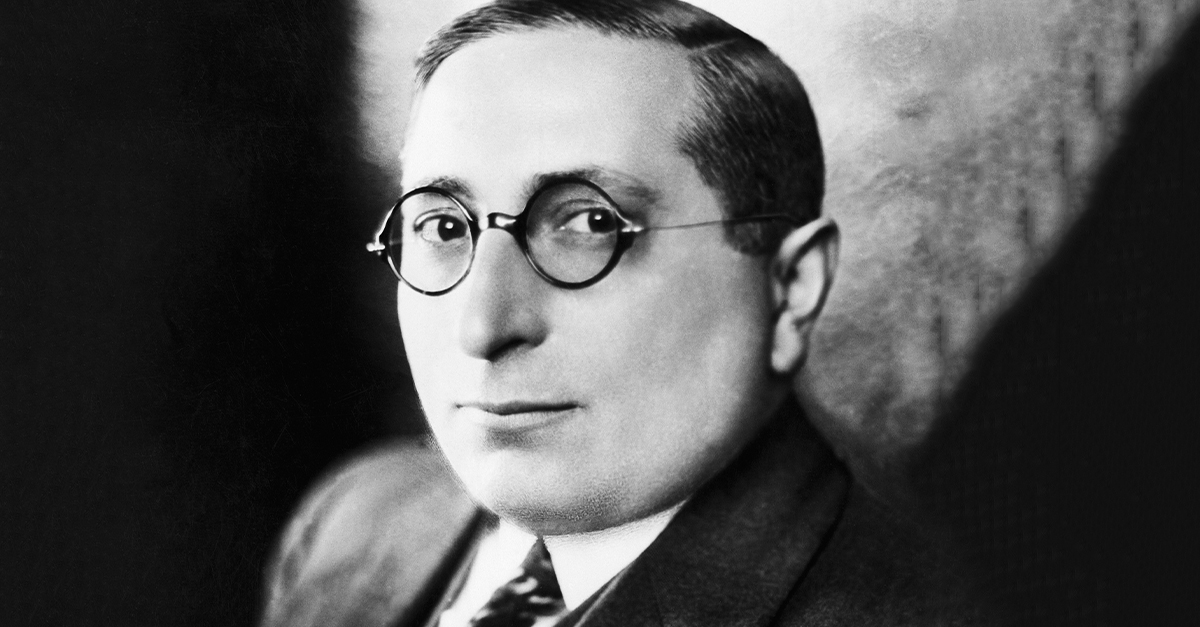The next time you pursue TMZ or People magazine for a little celebrity gossip, take a moment to wonder where it all started: with a man called Robert Harrison and his magazine Confidential. The thing about Harrison was that he’d do just about anything for a juicy tidbit—and pay almost any price. And if there were no story? He’d just blatantly lie. He became one of Hollywood’s most feared men and even inspired a movie: LA Confidential. For fun, let’s turn the tables and shine the light on Harrison, himself. Let’s see what scandals of his own these facts will uncover.
1. He Was The Baby
Robert Harrison—born on April 14, 1904 in New York City—was the only boy in the family. His three older sisters had a choice: they could make their little brother’s early years miserable, or they could dote on the little guy. Thankfully they chose the latter. Instead of making him a spoiled child, however, it turned him into the opposite—a very positive person.
Besides having a sunny disposition, young Harrison was also quick to forgive. It wouldn’t be long, however, before a nasty situation would test this.
2. He Refused To Pay
At an early age, Harrison knew he wanted to be a writer. When he was just 12, he put together something called Harrison’s Weekend Guide, which was a list of roadside inns in his area. My first question is: without being old enough to drive, how the heck did Harrison even know about roadside inns? Sadly, when Harrison went off to the printers to pick up his share of the profits, the printer flatly refused to give him any.
The good-natured Harrison somehow managed to forgive the printer. Harrison did, however, walk away from the experience with a lesson—you can only trust your family.
3. He Dove Right In
High school didn’t really fit into Harrison’s life plan, so he walked away before finishing it. It wasn’t long before he got his start in scandal. He was soon hired as a copy boy at the New York Evening Graphic, a publication that tended to focus its stories on the seamier side of life. While working there Harrison met Walter Winchell, who had amassed a following by printing scandalous stories about famous people.
These weren’t, however, harmless gossipy tidbits. Winchell’s stories would sometimes ruin careers. Winchell would go on to have a huge effect on Harrison’s career—and not in a good way.
4. He Moved Up
Yes, Winchell was a mentor, but Robert Harrison was still stuck in the copy room. In 1932, Harrison finally got to write something. One of his first stories was about a showgirl in the Ziegfeld Follies. And what was special about her? Instead of clothes, she only wore balloons. It may have been a fluff piece, but Harrison was finally writing and was on his way to becoming a real reporter.

History's most fascinating stories and darkest secrets, delivered to your inbox daily.
5. There Was Competition
Harrison was rising in the ranks at the New York City Graphic. The newspaper, however, was going in the other direction. There were other tabloids out there and this newspaper had to compete with them all—which had brutal consequences for Harrison. In the end, the paper had to close its doors, putting Harrison out of a job.
To make a living, he had to resort to selling song lyrics and writing for travel guides. Harrison was distraught. All he wanted was to be a journalist. Not knowing what to do, he turned to his father for advice, which was the wrong thing to do.
6. It Wasn’t What He Wanted To Hear
Harrison’s father was working class and had what he considered a “real job” as a coppersmith. He called Harrison’s career as a journalist an “air business”. When Harrison came to him for advice, he had some: become a carpenter. This was not what Harrison wanted to hear. He had no interest in something as practical as that.
He certainly didn’t want to disrespect his father, but could he really work with his hands for a living?
7. He Didn’t Have To Worry
As it turned out, Harrison wouldn’t have to worry about disappointing his father, because Mr. Harrison passed shortly after dispensing his advice. While this was certainly a tragedy for the Harrison household, it let Harrison continue following his passion without worrying about his dear old dad. In 1935, two years after losing his father, Harrison got a job. The publication was the Motion Picture Herald, and its editor was going to have a huge impact on Harrison as a writer—and as a man.
8. He Changed Hollywood
Harrison’s new boss, Martin Quigley, wrote about the film industry, but he was also a devout Catholic. He’d been one of the architects of what they would later call the Hays Code. The code put a moral limit on what could and couldn’t appear in a film. It was all about censorship, and Quigley made a dramatic change to Hollywood—one that many thought was for the worse.
What, then, could Harrison learn from this man?
9. He Had A Weird Job
Quigley sent Harrison to Hollywood with a bizarre request. He wanted him to collect photos of women who wanted to get into show business. While Harrison was going through all these pictures of hopeful young stars, he got an idea. What about, instead of a film newspaper, he made a film magazine and filled it with photos like these?
When he got back to New York City, Harrison decided on his next move as a journalist: publishing cheesy pinup photos of gorgeous women. How he planned to do this was the stuff of legend.
10. He Went In At Night
Now remember, Harrison was still working for his ultra-conservative Catholic boss who fought to make movies more wholesome. After Quigley went home for the day, Harrison snuck back into his boss’ facility and printed his magazine of scantily clad women. He called it Beauty Parade and it promised “The World’s Loveliest Girls”. He started making the magazine in October 1941. By Christmas of that same year, Harrison’s boss was going to get the shock of his life.

History's most fascinating stories and darkest secrets, delivered to your inbox daily.
11. He Paid A Surprise Visit
Now, Harrison was Jewish and didn’t celebrate Christmas like his Catholic boss. So, Harrison probably figured he had the workplace to himself—but he was gravely mistaken. On Christmas Eve, 1941, Quigley decided, for some unknown reason, to pay a visit to his publishing office.
When he opened the door, he came upon something he couldn’t quite make sense of. It certainly wasn’t Santa's workshop—it looked more like Satan’s.
12. He Got No Mercy
What Quigley saw on that fateful Christmas Eve was his lowly employee cutting and pasting photographs of scantily clad women. Quigley was very much against these kinds of photos and there Harrison was, using Quigley’s own facilities for the very thing he was trying to ban from the face of the earth. Quigley felt no Christian mercy on that sacred night, and he fired Harrison on the spot.
13. He Needed Help
Robert Harrison had finally found a profession he excelled at, and now his uptight boss had put an end to it. Help arrived from an unusual place. Two of Harrison’s three sisters stepped up with some much needed cash to help him out. They managed to put up several thousand dollars to keep their little brother working with his dirty pictures. Money was all he needed, and Harrison was off and running again.
14. He Posed Them
With the success of Beauty Parade, Harrison soon put out a second magazine called Eyeful. The only difference between this and his previous venture were the poses. Where before just the sight of a woman partially clothed was enough for most of his reading audience, with Eyeful, Harrison was playing with suggestive positions.
It was at this time that Harrison met two women that would send his industry soaring.
15. They Changed His Life
An officer of the law—and aspiring photographer—had discovered a young woman who wasn't afraid to pose in very provocative pictures. Her name was Bettie Page and she soon came to the attention of Harrison. At around the same time, Harrison met and hired a psychology major named Edythe Farrell. Besides unusual spellings of their first names, the two women had something else in common—they changed Harrison’s life.
16. It Was A Lethal Combination
Harrison’s new hire Farrell introduced her boss to a book called Psychopathia Sexualis. This book opened Harrison’s eyes to the world of whips and chains and gave him the idea to mix them with high heels. Then Page came into the picture and was willing to pose in any way that Harrison saw fit. It was this lethal combination that led to Harrison’s next magazine, Titter.
The public couldn’t get enough of these steamier-than-steamy photos. In fact, they wanted more.

History's most fascinating stories and darkest secrets, delivered to your inbox daily.
17. He Went Too Far
Robert Harrison went even further than he had before with his new magazine Whisper—but he paid the price for it. In 1953, the magazine got him in trouble with the law. Harrison wanted to do an outdoor photo shoot with Bettie Page, but his choice of location was probably not the most private. He did the shoot in broad daylight and on a New Jersey golf course.
As officers descended on the course, they made a disturbing discovery: Page was posing as a prisoner of other models dressed like the Ku Klux Klan. Let’s just say, the officers failed to see the artistic merit.
18. He Moved On Up
Of course, through all these magazines, Harrison was making loads of money. His living arrangements were the first thing that needed changing. He’d been living in a small apartment with his sister Helen. When he realized how much money he had, he and Helen moved to a swanky apartment—with nine bedrooms no less—near Central Park.
Of course, with money, sometimes people develop some pretty interesting quirks.
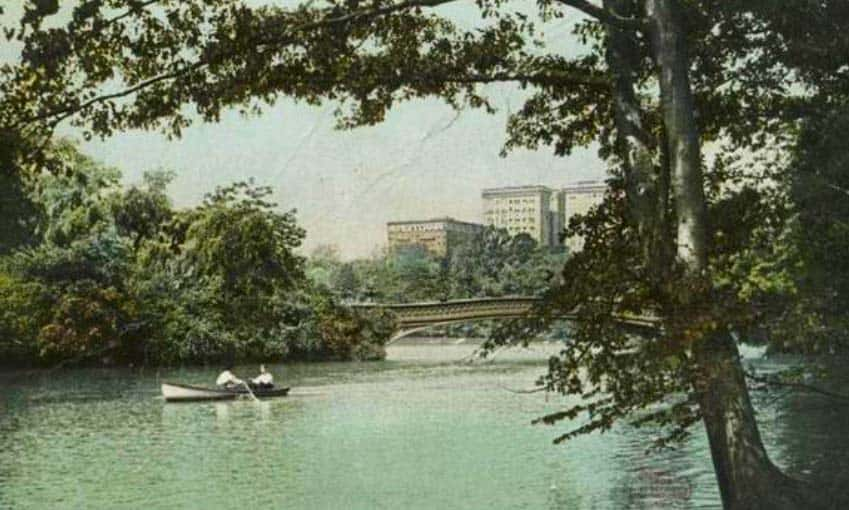 Picryl
Picryl
19. He Had A Distinct Style
Robert Harrison was becoming a man around town and was frequenting New York City nightclubs. People on the scene started to notice something weird about Harrison. He was almost always dressed in white. His suits were white—and also bespoke—as were his hats and cashmere coats. This interest in all things white continued into his choice of car. It was a Cadillac and it was long, white, and without a top.
Another thing he liked white? His date's hair. The women on his arm all had to have platinum blonde hair. Harrison seemed to have it all—at least for a New York minute.
20. It Started To Crumble
Just as Harrison was moving up in the world, his empire started to crumble. There was a lot of competition out there, especially from people like Hugh Hefner. And these new magazines did something that Harrison didn’t. They featured famous people like Marilyn Monroe.
Plus, there was something else. Harrison never asked his models to take all their clothes off, which was something Hefner almost required. Harrison knew he was in trouble, and he turned to his accountant to see how bad it was.
21. He Pivoted
The only news Harrison’s accountant had for him was that he was going broke—fast. Harrison knew he couldn’t compete with the new magazines, so he came up with a new plan. He looked back to his roots at the New York Evening Graphic and thought about what he had learned there. Harrison knew that people liked scandal. He also knew that now, more than ever, people like celebrities. What if he combined the two?
From this line of reasoning, Harrison’s next—and most scandalous—publication, Confidential, was born.
22. He Didn’t Make Any Friends
While Robert Harrison never used actual celebrities in his “Cheesecake” publications, Confidential would be full of them. But, instead of giving the reading public beautiful photos of their favorite stars, they’d get the dirt. They’d read about their private life, their secrets, their addictions, and their problems with the law. Harrison wasn’t about to make any friends—but he hoped to make a lot of money.

History's most fascinating stories and darkest secrets, delivered to your inbox daily.
23. He Went To Extreme Measures
Some of the most eagerly-read stories in Confidential were about actors and actresses who were secretly gay. When heartthrob Rock Hudson heard that there was going to be a story about him in Confidential about attending a gay party, he did two things to try and derail it. He allegedly hired thugs to threaten Harrison, and then he did something even more drastic.
He married his agent’s secretary. Harrison was certainly making waves, but were any of the stories in Confidential even true?
24. He Suggested It
Indeed, a lot of celebrity stories that Robert Harrison reported were false. Did crooner Frank Sinatra really wolf down bowls of Wheaties in order to heighten his experience in bed? Probably not. The stories never said that the thing was true, but merely suggested that it could be. It was, however, when Harrison had actual evidence of a scandal that things got interesting.
25. He Took The Gloves Off
When it came to writing about celebrity scandals, Robert Harrison had an unusual strategy. If he had some concrete evidence that there was truth to his rumor, he went for the jugular. What he did was make the scandal ten times worse than the reality. And why? Because if there was truth to the original scandal, the celebrity couldn’t sue him for his outrageous untrue claims—at least not without admitting the truth.
Harrison had a winning strategy—but there was something more.
26. He Had A List
Harrison was after more than just celebrity gossip—there was something else on his list. He also targeted people who were left wing. Harrison was decidedly Republican and used Confidential to out celebrities that leaned a little too far to the left. He also had another group in his sights: mixed raced couples. The man had a plan, and it was about to be immensely popular.
27. He Soared
Harrison’s Confidential had a fairly slow start. The caption on the front cover of the first issue—December, 1952— was “The Lid Is Off” and only 250,000 people bothered to pick it up. Eight months later, when he broke the story of Marilyn Monroe breaking up with her baseball-playing husband, the sales soared to 800,000. Harrison was certainly getting a second chance at fame.
So, what would he do with it?
28. He Stepped Things Up
Once Robert Harrison realized he was sitting on a very profitable endeavor, he stepped things up. In addition to his LA office, he rented space—4000 square feet of it—in midtown Manhattan. But who was working in these spaces? Harrison tried to hire mostly family to do the clerical work. Ideas for stories were, however, coming from a much darker source.
Harrison hired informants to find him stories. And who were these informants? They were everyday people—hotel workers, detectives, and even call girls—who had a story to tell and needed a buck.

History's most fascinating stories and darkest secrets, delivered to your inbox daily.
29. She Had No Morals
Another source for stories for Confidential came from B-list celebrities. One was Francesca de Scaffa, the wife of tough guy actor Bruce Cabot. De Scaffa seemed to have limitless access to celebrity parties—and no morals about sharing what happened at them. She revealed stories about Errol Flynn secretly watching amorous couples through a two-mirror he had in his house and about Robert Mitchum appearing at a costume party wearing only ketchup.
Supposedly, Mitchum said his costume was a hot dog, and he invited guests to…well you can guess. There was, however, yet another source of stories that was much more dangerous.
30. They Came From The Top
Occasionally, Harrison got stories from the top—and the reason why was shocking. Studio heads and producers sometimes needed to rustle some feathers for movie stars that they felt needed punishment. At these times, people like Columbia Pictures head honcho Harry Cohn would reach out to Harrison to get some bad publicity on a star who wasn’t playing by the rules—or at least, his rules. It was a dangerous game, but Harrison was raking in the dough and couldn’t help himself.
31. He Was More Than Respectable
With scandalous stories coming in from various sources, Confidential was booming. Harrison was taking in a half a million dollars per issue and was selling more copies than respectable publications like The Saturday Evening Post and Reader's Digest. So far, Harrison had tried to keep it all in the family—mostly hiring relatives.
At this point, he decided he needed help from someone from outside the family. The man he chose, however, would turn out to be a whole lot of trouble.
32. He Made A Huge Mistake
On paper, Howard Rushmore and Robert Harrison seemed to be two peas in a pod. Rushmore was a writer, he was interested in movies, and he, like Harrison, was passionately anti-communist. Rushmore had severed ties with other anti-communists, like Roy Cohn, and was in need of a job. Harrison stepped in and offered Rushmore a position at Confidential: chief editor. This would prove to be one of Harrison’s biggest mistakes.
33. He Beefed It Up
While working at Harrison’s Confidential, Rushmore had a bizarre strategy. He would attack Hollywood celebrities who he suspected were communists—or at least sympathetic to communism. He wouldn’t just attack them for their politics, but he would add something to beef up the story. What Rushmore liked to do was imply that these communist sympathizers were also deviants in the bedroom.
So far, Harrison was on board with what Rushmore was up to. Disagreement, however, was just around the corner.
34. He Didn’t Give A Hoot
The place where Harrison and Rushmore differed was on celebrities. If Rushmore had his way, he would be uncovering communists in all areas of public life. Harrison, however, was more intent on reporting celebrities as it likely sold more issues of Confidential. He, according to his niece Marjorie Meade, “didn’t give one hoot about politics”.
Harrison noticed that he really clicked with his niece Marjorie Meade, so he employed her in his most outrageous scheme yet.

History's most fascinating stories and darkest secrets, delivered to your inbox daily.
35. She Was Scary
Robert Harrison wanted to expand his empire, so he started Hollywood Research Inc. This new branch of Confidential wasn’t a new magazine but an organization to gather intelligence on Hollywood stars. When looking for someone to head this organization, he turned to his niece, Meade. Before this offer, Meade was a good-natured stay-at-home mom. When she moved from New York to LA, she quickly became one of the scariest women in Hollywood.
Not only was Meade the one with all the secrets of Hollywood celebrities, she was about to take Confidential in a very disturbing direction.
36. It Was Full Of Thugs
When John Mitchum—younger brother of Cape Fear’s Robert Mitchum—had a meeting at Harrison’s Hollywood Research Inc, he couldn’t believe what he saw. He said the place was full of dangerous-looking thugs, who he said looked like “they were packing heat”. So what had become of Confidential? What had Meade done with Hollywood Research Inc that made it necessary to hire thugs?
37. He Changed Strategy
Instead of just publishing stories about celebrities' private lives in order to sell issues, Confidential had started to take a much more twisted approach. It became a blackmail operation. Before they published an article with some stunning scandal, these tough guys approached the accused celebrity and gave them a chance to buy the article. If they didn’t want to pay in cash, they could exchange it for scandalous information they had on another celebrity.
This simple celebrity scandal sheet was turning into something very different. Where would it all end?
38. They Wanted Blood
Two celebrities that Robert Harrison’s Confidential approached for cash were Lizabeth Scott and Robert Mitchum. These two high-profile film noir actors decided they neither wanted to pay in cash nor rat out their fellow celebrities. In fact, the two were going to go for blood. They wanted to sue Harrison and Confidential magazine. Scott and Mitchum marched down to the Supreme Court and filed their suit.
39. There Was One Big Problem
There was one very big problem with Scott and Mitchum’s lawsuit against Harrison. The two Hollywood stars filed their suit in Los Angeles and Confidential’s headquarters were officially in New York City. In March of 1956, a LA Supreme Court judge put an end to the lawsuit because it was in the wrong state. While Scott and Mitchum failed to take Harrison down, their bravery incited other celebs to take Harrison and his lies to court.
The dollar amounts subsequent lawsuits would begin to amass and eventually reach $40 million. Before this happened, however, Harrison would find himself at the center of his own controversy.
40. He Held A Grudge
With all the lawsuits around his name and company, Robert Harrison still found time to take a vacation. This was no ordinary vacation, however, it was a hunting safari in the Dominican Republic. The hunting guide was Richard Weldy and he was a strange match for Harrison. You see, Harrison had previously published an article that said that Weldy’s ex-wife had cheated on him before they’d been divorced.
So what we have here is a dangerous hunting trip featuring one man who has a grudge against another. Sounds like a recipe for disaster to me.

History's most fascinating stories and darkest secrets, delivered to your inbox daily.
41. A Shot Was Fired
During Harrison’s safari in the Dominican Republic, a newspaper reported a terrible accident had occurred. The story was that Weldy had shot Harrison in the shoulder. What was worse was that Weldy ran off and left Harrison bleeding in the jungle, with only his girlfriend to help him. A search party rescued Harrison, and the local authorities later took Weldy into custody—but there was a strange twist.
Harrison refused to bring charges against Weldy. When Harrison later went on CBS, he showed Mike Wallace a wound in his shoulder where he had been shot. It was a fabulous story that gave Harrison a ton of free publicity. There was only one problem—none of it was true.
42. It Was A Set-Up
Apparently, Robert Harrison had set the entire safari incident up. Harrison’s “girlfriend” was a hired actress, and the wound Harrison showed Wallace was actually a birthmark. Harrison had even taken phony pictures of himself in the hospital. What was most surprising was the fact that there wasn’t even an article in Confidential about Weldy’s ex. None of it was true.
Harrison seemed to be losing his marbles—and Rushmore? He’d already lost all of his.
43. He Thought He Was Crazy
In the meantime, Harrison’s right-hand man, Rushmore, was spiraling out of control. He and his wife both had a drinking problem, which resulted in his wife trying to drown herself in the East River. This, however, didn’t stop Rushmore from continuing to bother celebrities. Rushmore came to Harrison with an idea. How about accusing the first lady of the United States of having an affair with her chauffeur—who just so happened to be African American?
The first lady? Harrison took one look at Rushmore and realized he was crazy.
44. He Carried A Grudge
Harrison refused to print Rushmore’s story about Eleanor Roosevelt. As a result, Rushmore quit—and immediately went to seek revenge against his former boss. He flew to LA, where he approached the California Attorney General and offered to be a witness in a case against his enemy, Harrison. There was still the same problem though: Confidential was in NYC, so any case in California wouldn’t go forward.
The Attorney General and Rushmore came up with a plan. They wouldn’t charge Harrison or Confidential, but instead charge Hollywood Research Inc—and with it. Harrison’s niece.
45. They Left In Droves
The trial against Hollywood Research Inc promised to be star-studded—at least, that was the plan. When the word got out that more than 200 celebrities were going to get subpoenas, there was a grand exodus from Hollywood. After all, no one wanted to testify about their scandals under oath, lest they incriminate themselves.
De Scaffa, who would have been a star witness, headed down to sunny Mexico to avoid appearing. But what about the celebrities that didn’t leave the country?
46. He Stood Alone
Most of the celebrity witnesses were now safely out of the country, but some couldn’t get out fast enough—and what happened to them was seriously disturbing. Of those that remained, one received threatening phone calls, another had a fatal drug incident, and still another drowned in her own bathtub. In the end, it was Rushmore standing almost all by himself as the star witness.
He simply told the court what most everyone knew already: That many of the stories in Confidential were not true. The jury took the information Rushmore had provided and went to deliberate—for a very long time.

History's most fascinating stories and darkest secrets, delivered to your inbox daily.
47. He Partied Too Soon
It looked like it would be a mistrial, so Robert Harrison claimed an early victory. He had a huge celebration of his win and even bought his attorney a brand-new Cadillac as a thank you. But Harrison was putting the cart before the horse. If it was going to be a mistrial, that would mean a whole new trial. That’s when he made a heartbreaking realization.
He couldn’t put his niece through that, so he decided to settle with the judge out of court. The terms he agreed to, however, would be devastating to Confidential.
48. He Made A Promise
In the end, to avoid a prolonged trial, Harrison promised to print only positive stories in his publication. This, as you can guess, would be the beginning of the end for Confidential. It seemed that Rushmore had finally gotten his revenge on the man who had given him a job when no one else would. Rushmore may have won this battle against Harrison, but his life was about to take a shocking turn for the worse.
49. They Took A Cab
Rushmore and his wife seemed to always be in the middle of a dispute. Sometime after the trial, they had a huge argument in a cab, and Rushmore pulled out a revolver and shot his wife in the face. He then turned the revolver on himself. Even though Rushmore had ended his career, Harrison didn’t hold a grudge against him.
Instead he tried to get people to believe that Rushmore hadn’t ended his own life, but was a victim of murder.
50. It Became A Hobby
After the Rushmore ordeal and the sale of the failed Confidential title, Robert Harrison continued working in publishing. Now, however, it was more of a hobby than a career. He continued to live in the Delmonico Hotel, but, ironically, he used an alias to avoid unwanted publicity.
In 1978, Harrison died quietly while living with his mistress Regi Ruta. His sister found his lifeless body seated at his desk—it was a heart attack that did it. He was working right til the end.

